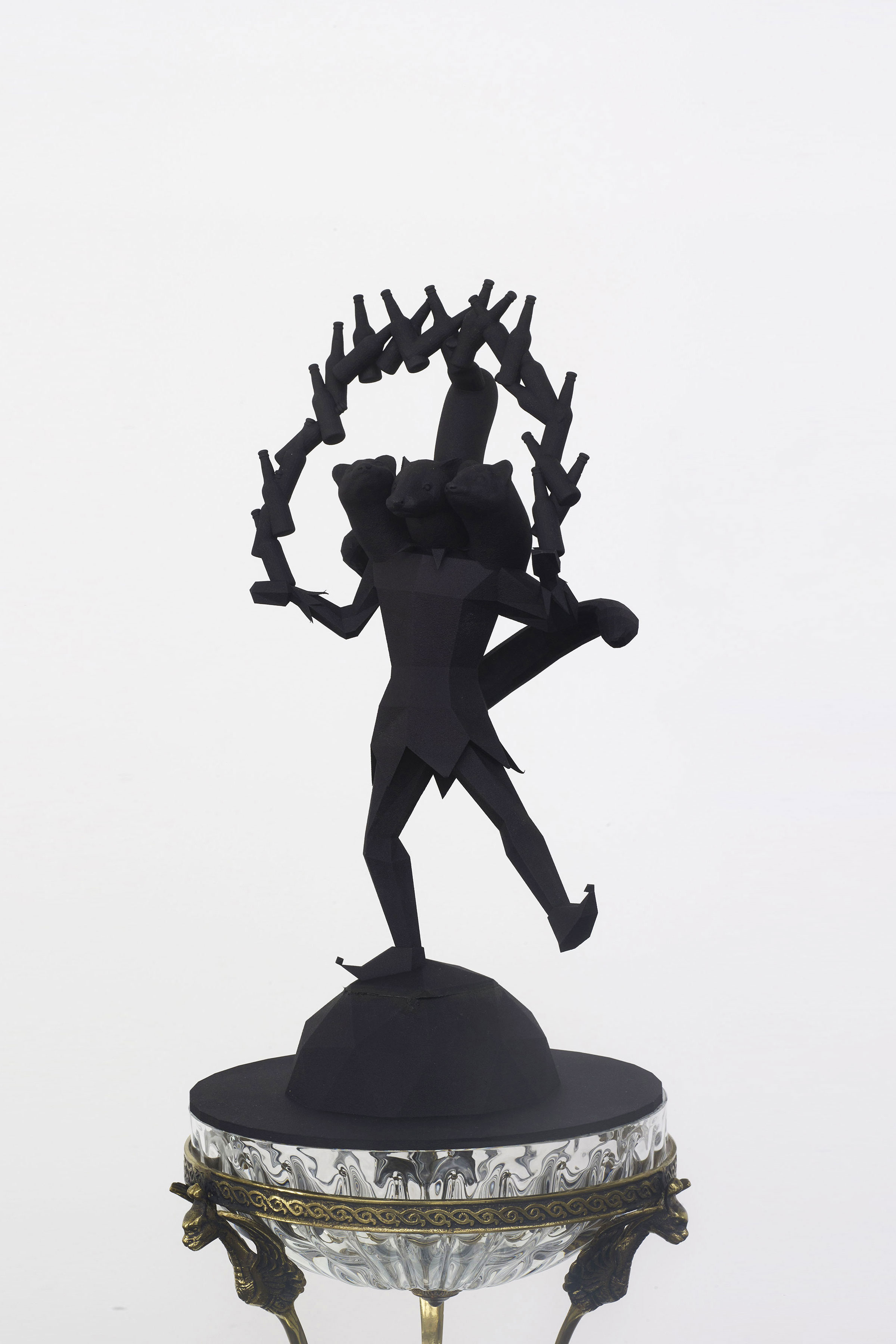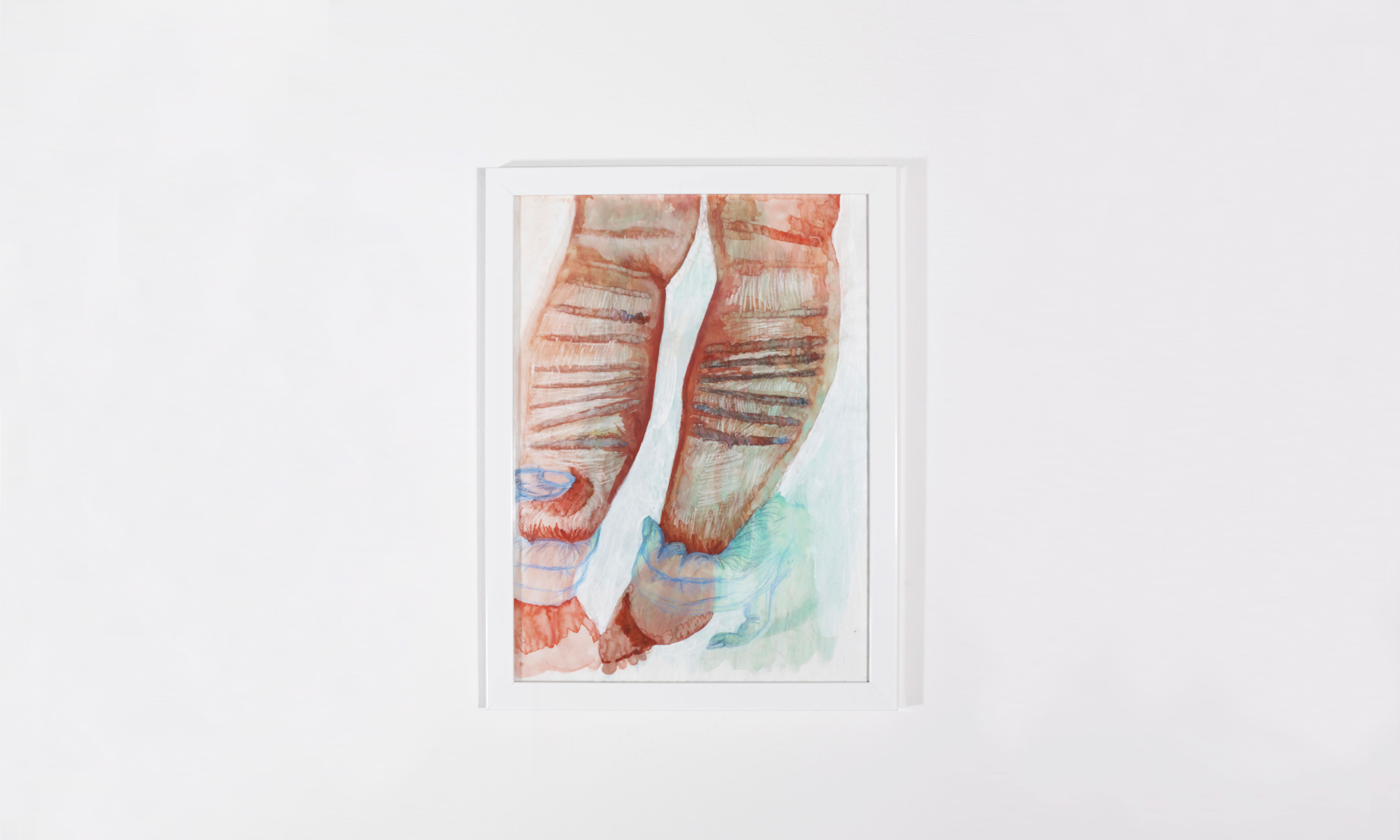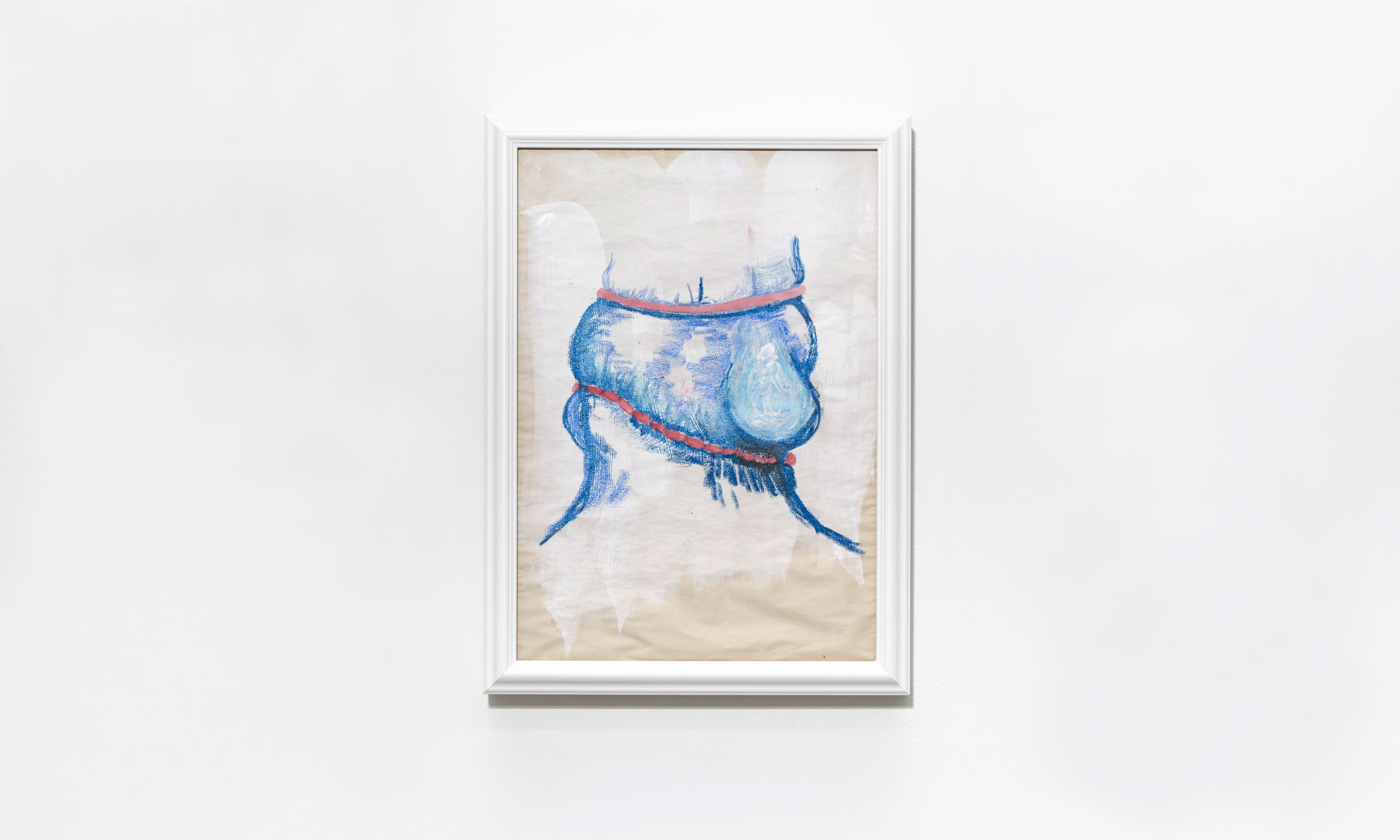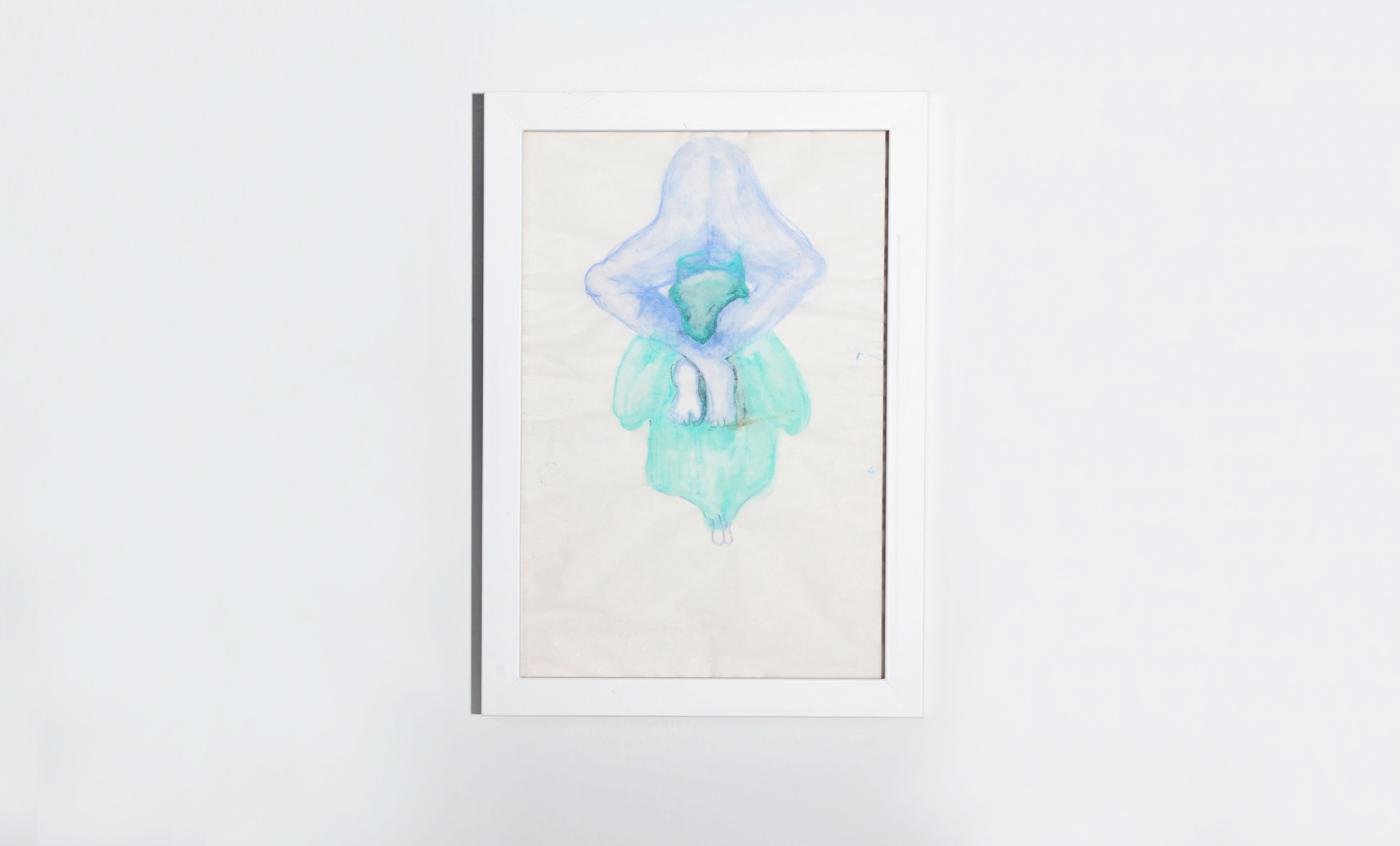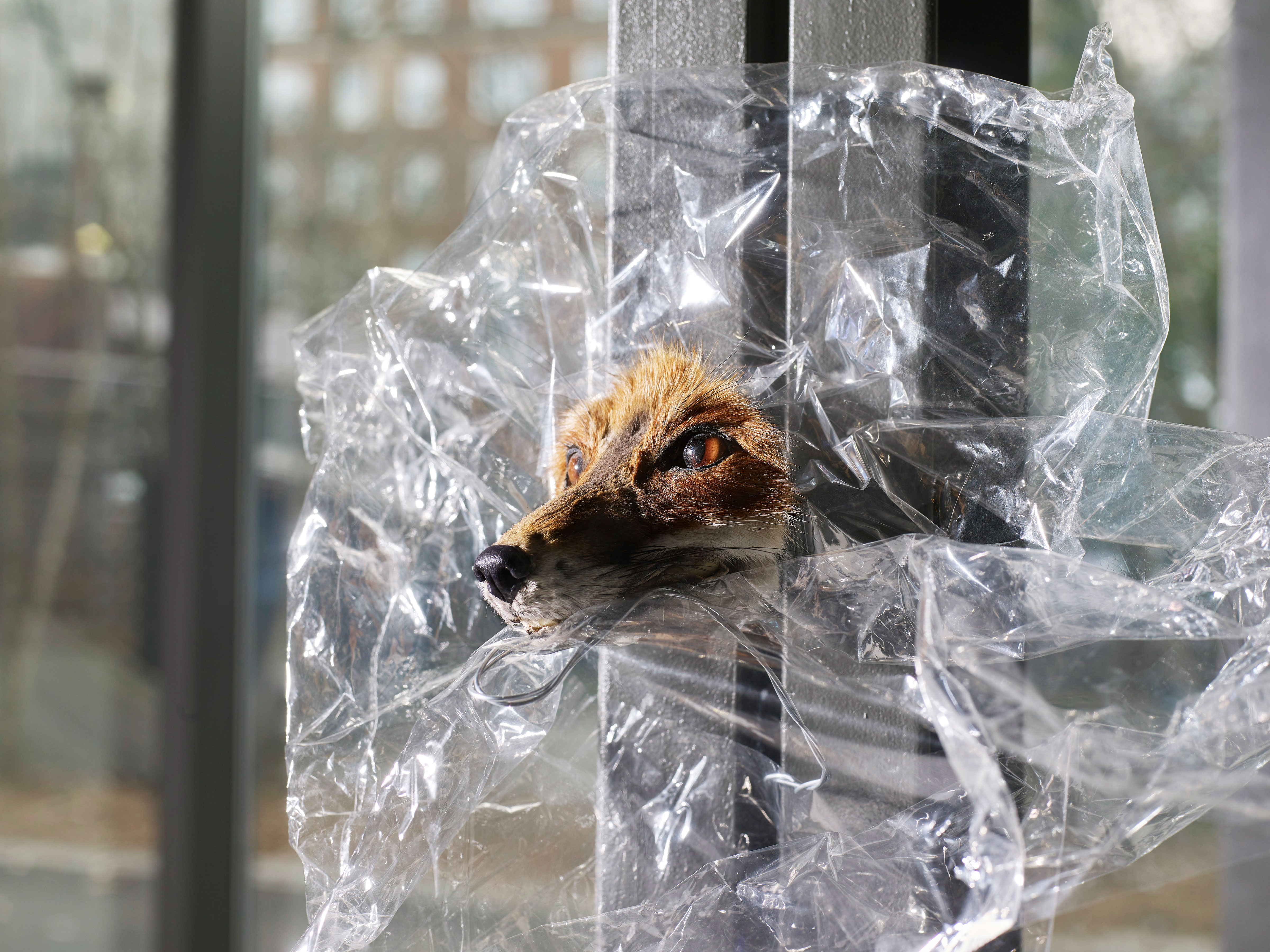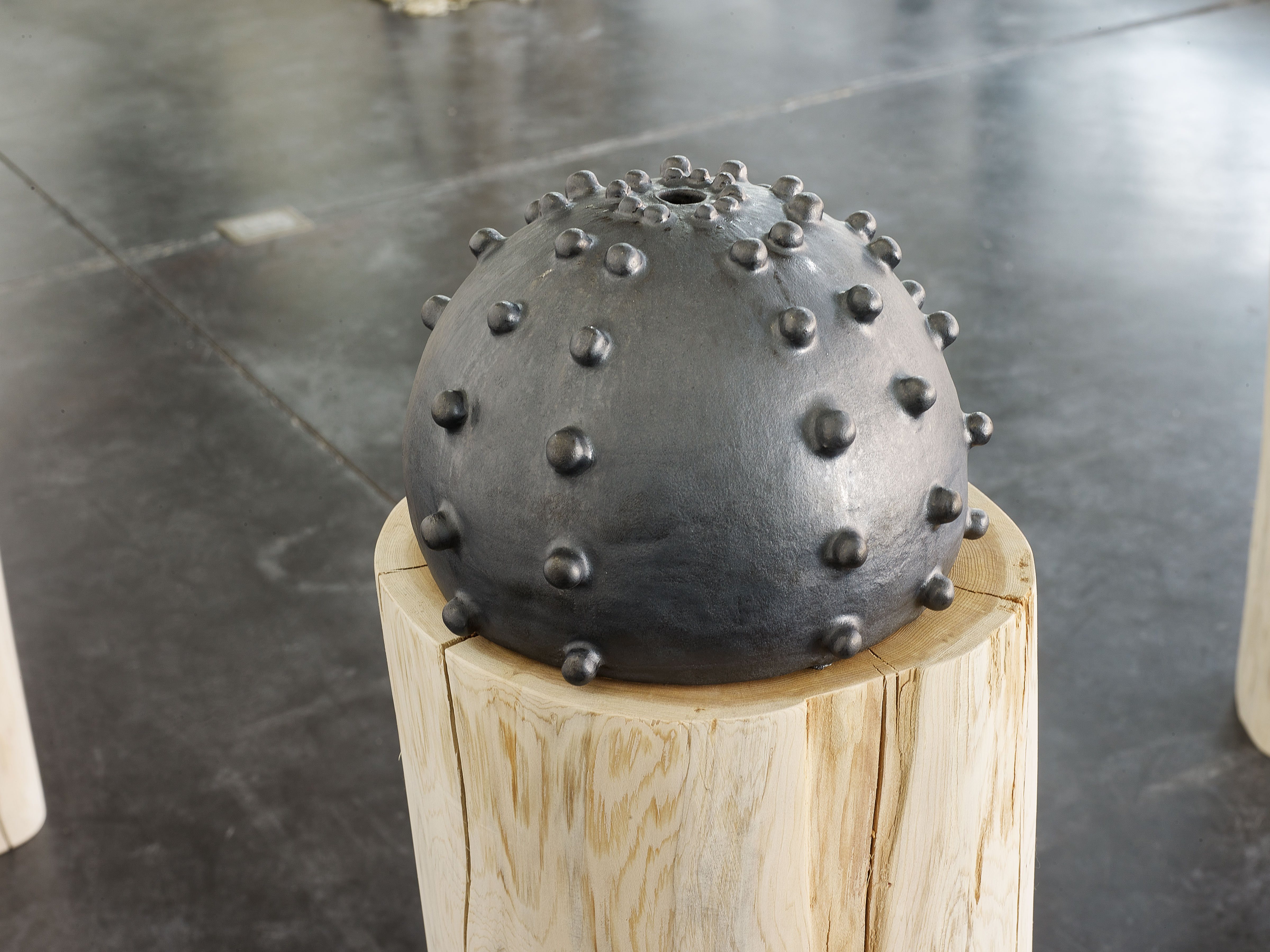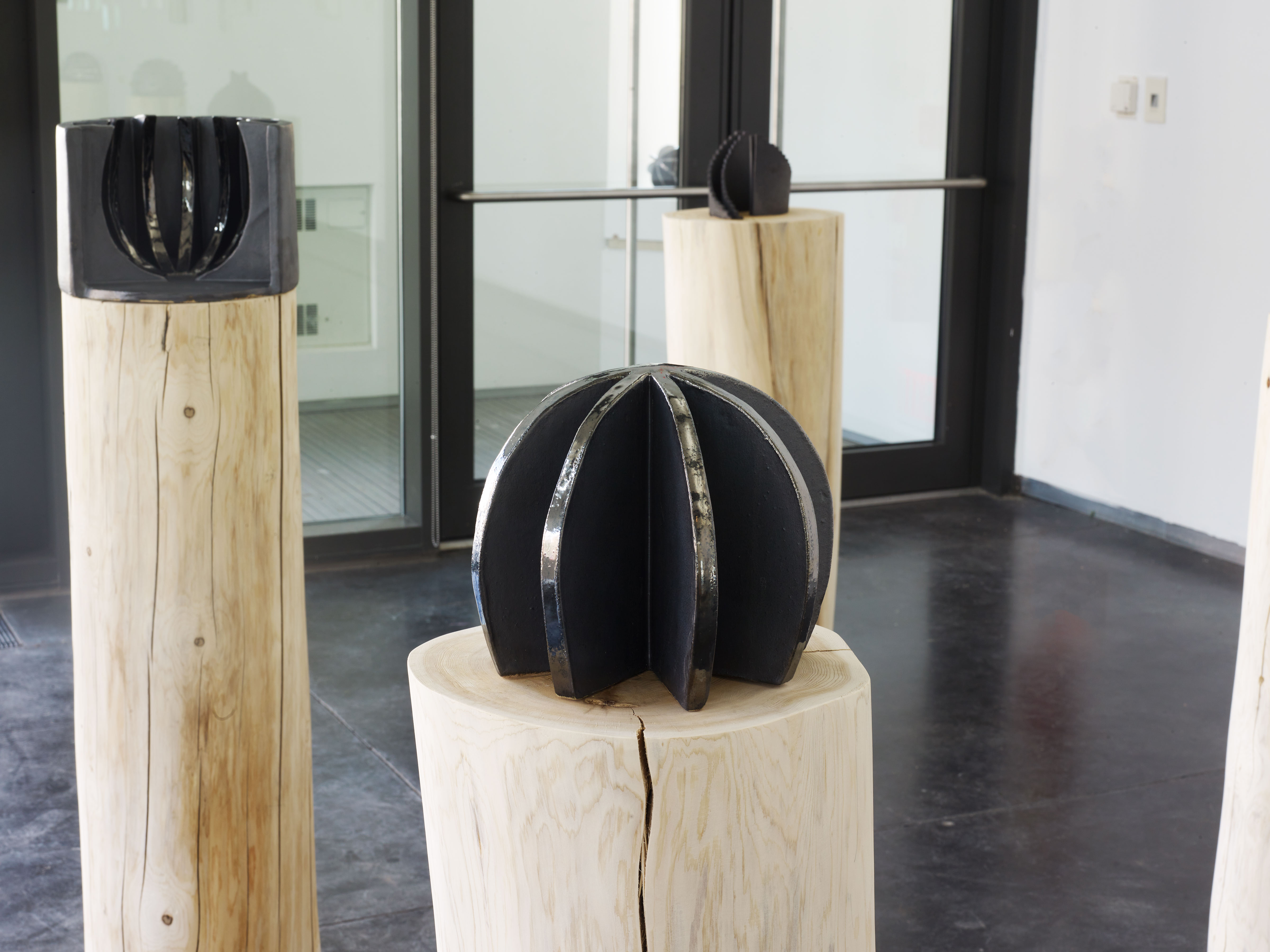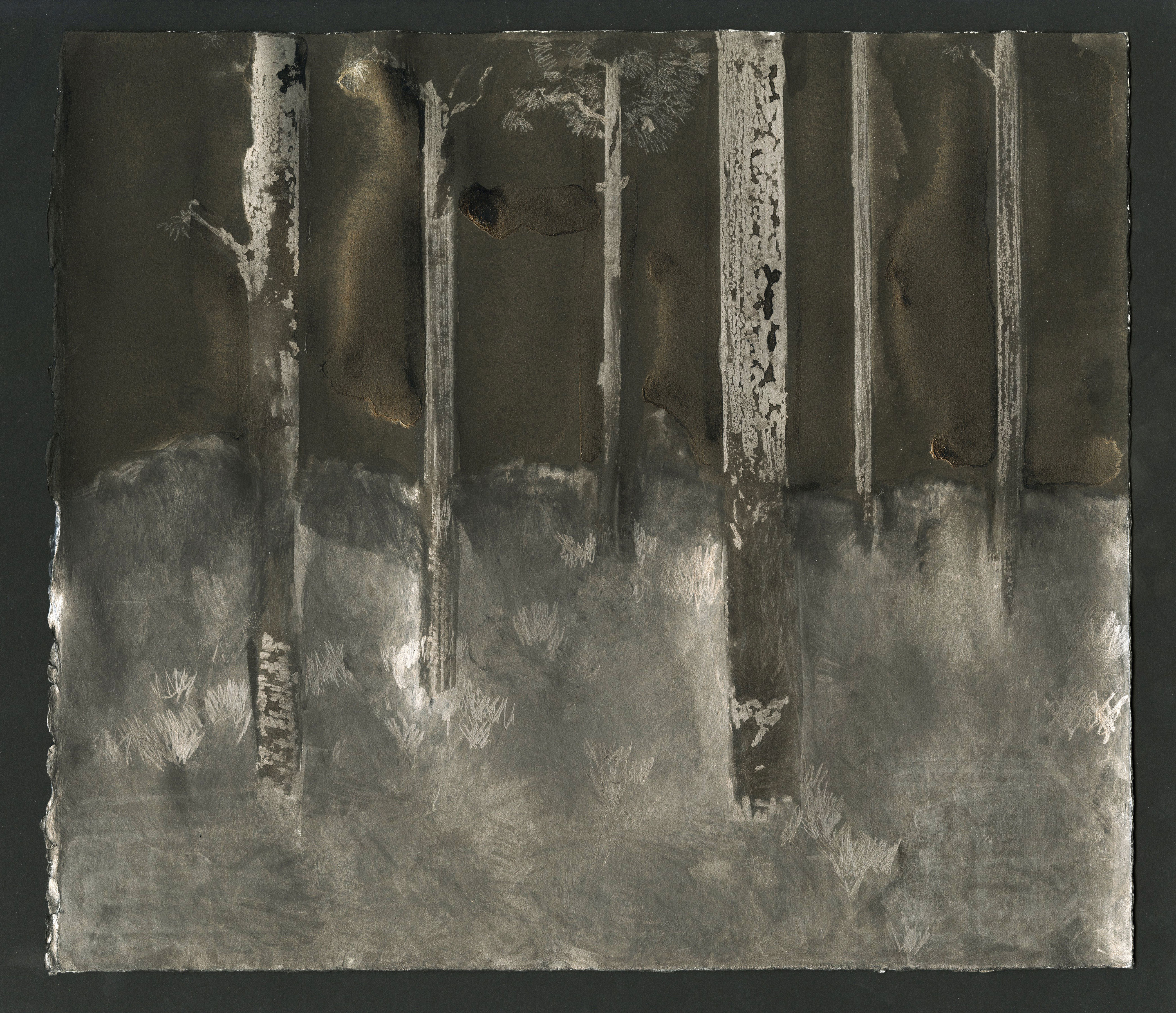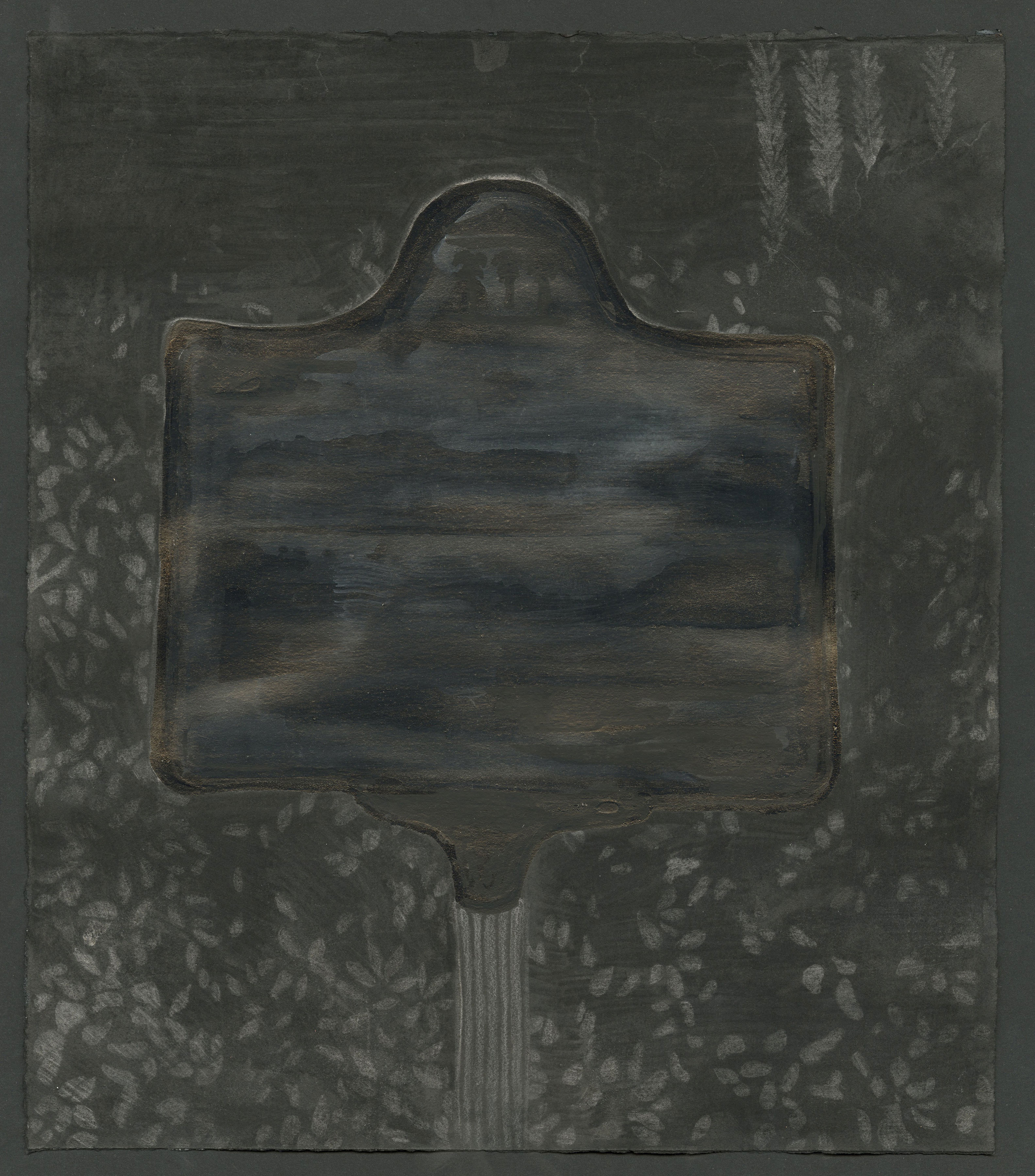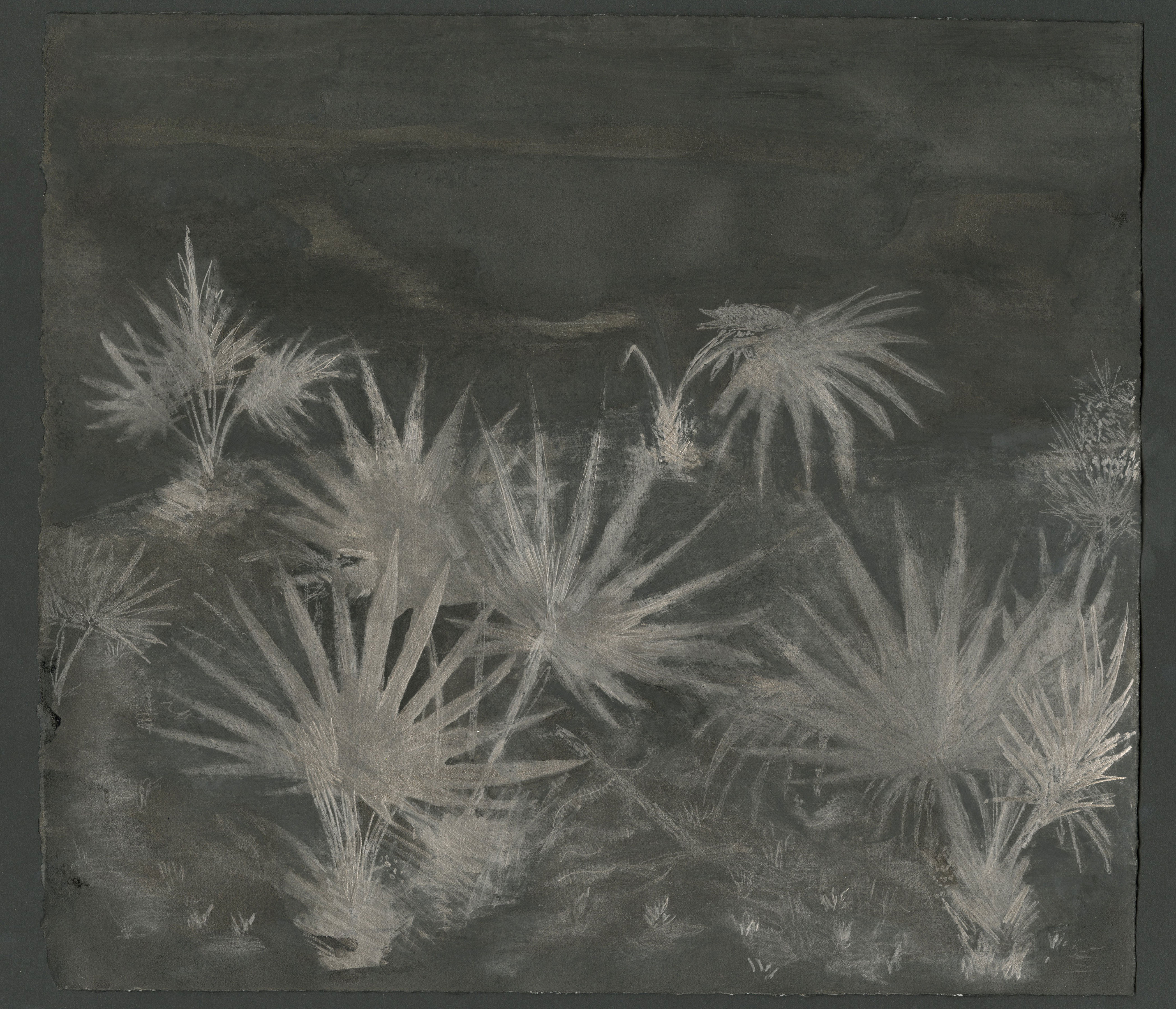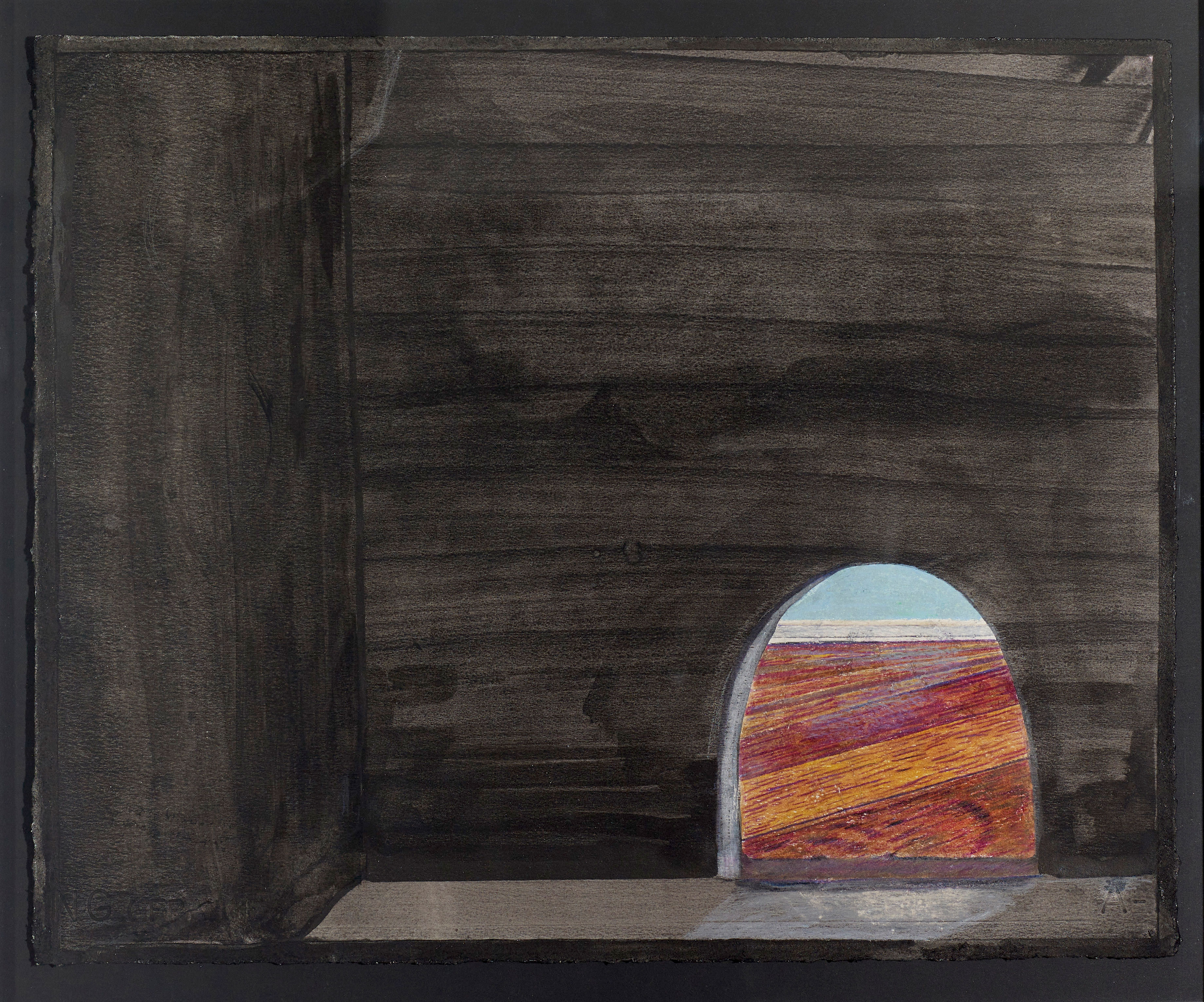Delayed by a year and far overdue, the second half of No Deep Kissing, Yale School of Art’s Sculpture Group 2 graduates of 2020 Thesis show opens Monday, March 22nd at 32 Edgewood. Featuring new works and installations from Genevieve Goffman, Lauren Lee, Anna Alvina Miller, Randi Renate, David Roy, and Alex Zak, this exhibition celebrates not only the culmination of the artists’ graduate school careers, but also the continued dedication to their practices in a year of great upheaval and duress. Even in the quietest of times, graduating into the world can be a difficult and disorienting task—we often change in ways we don’t expect with people whose faces are only recently becoming familiar to us. But now, as the world slowly re-emerges from the carnage of a year isolated and fearful, we see the work still persists—though not as we may remember it. Let us begin the process of finding our communities in their wholeness once more and hold space together, even if the rule of no deep kissing remains.
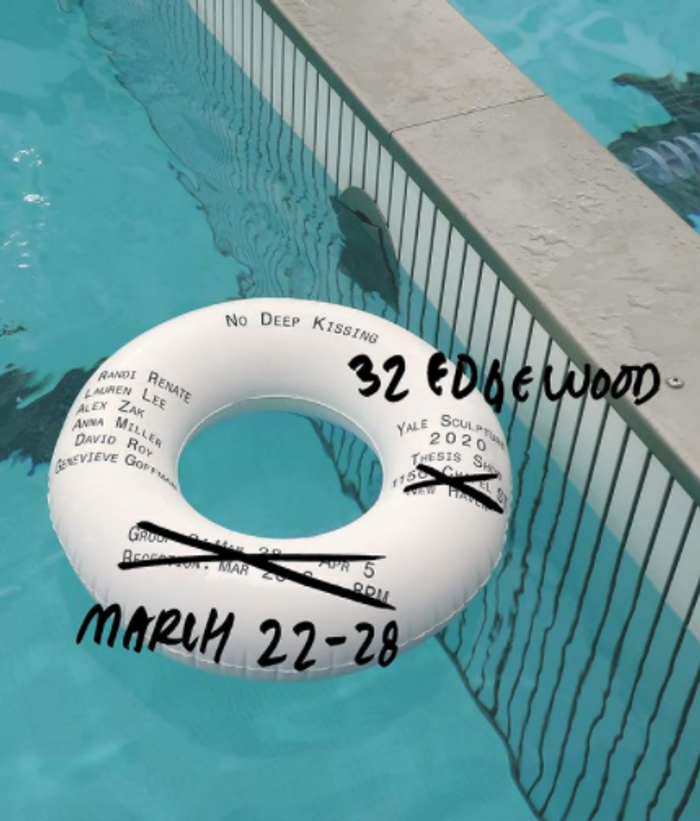
No Deep Kissing
Yale Class of 2020 Sculpture MFA Thesis Show Group 2
March 22-28, 2021
32 Edgewood Gallery, New Haven, CT 06511
Artists:
Genevieve Goffman
Lauren Lee
Anna Alvina Miller
Randi Renate
David Roy
Alex Zak
Website design:
by Harin Jung, Yale Graphic Design MFAs ‘21
Poster design:
by Jinu Hong, Kyla Arsadjaja, Orysia Zabeida, Yale Graphic
Design MFAs ‘20
Documentation Photography:
by Merik Goma
Virtual Exhibition Walk-Through ↗
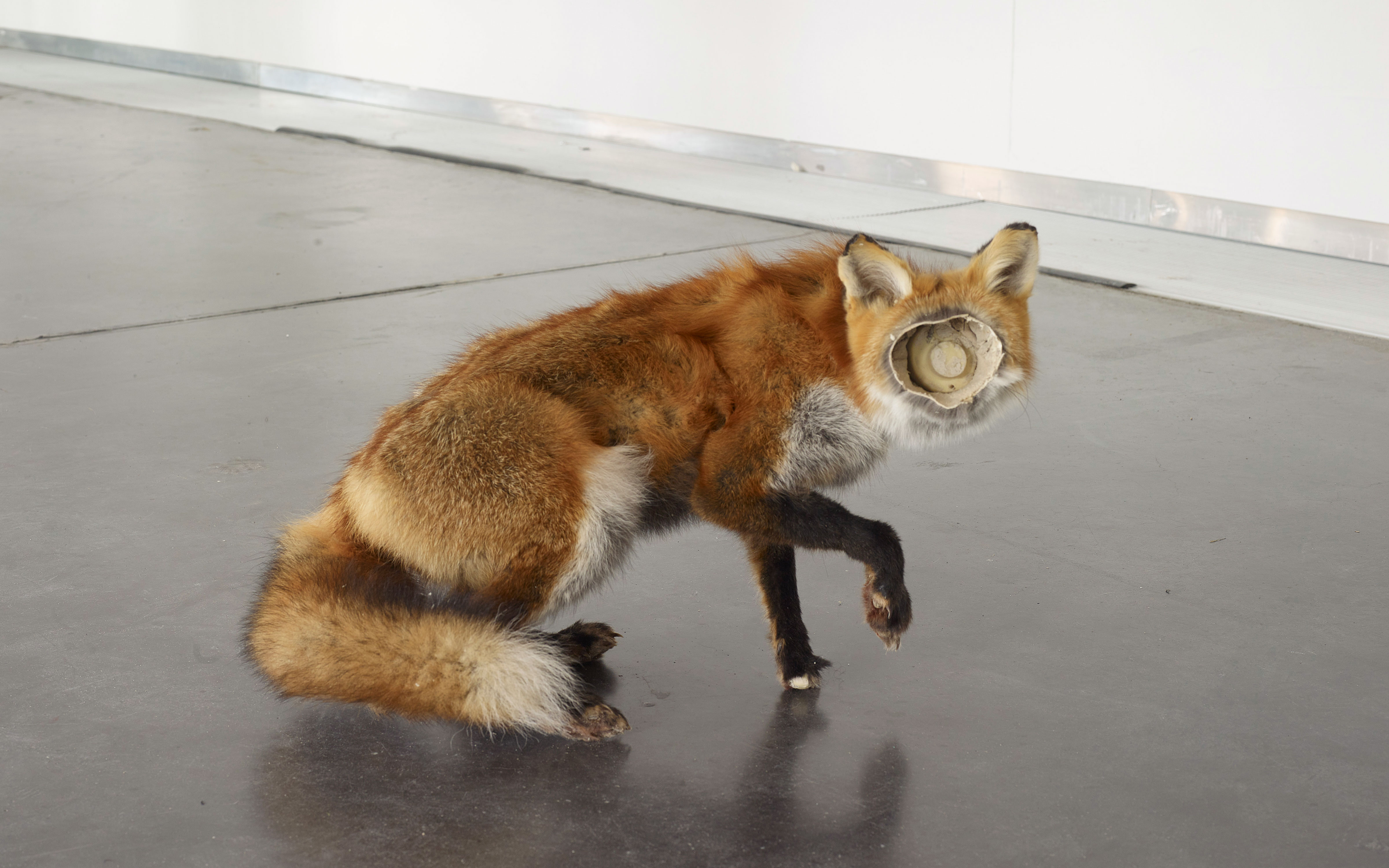
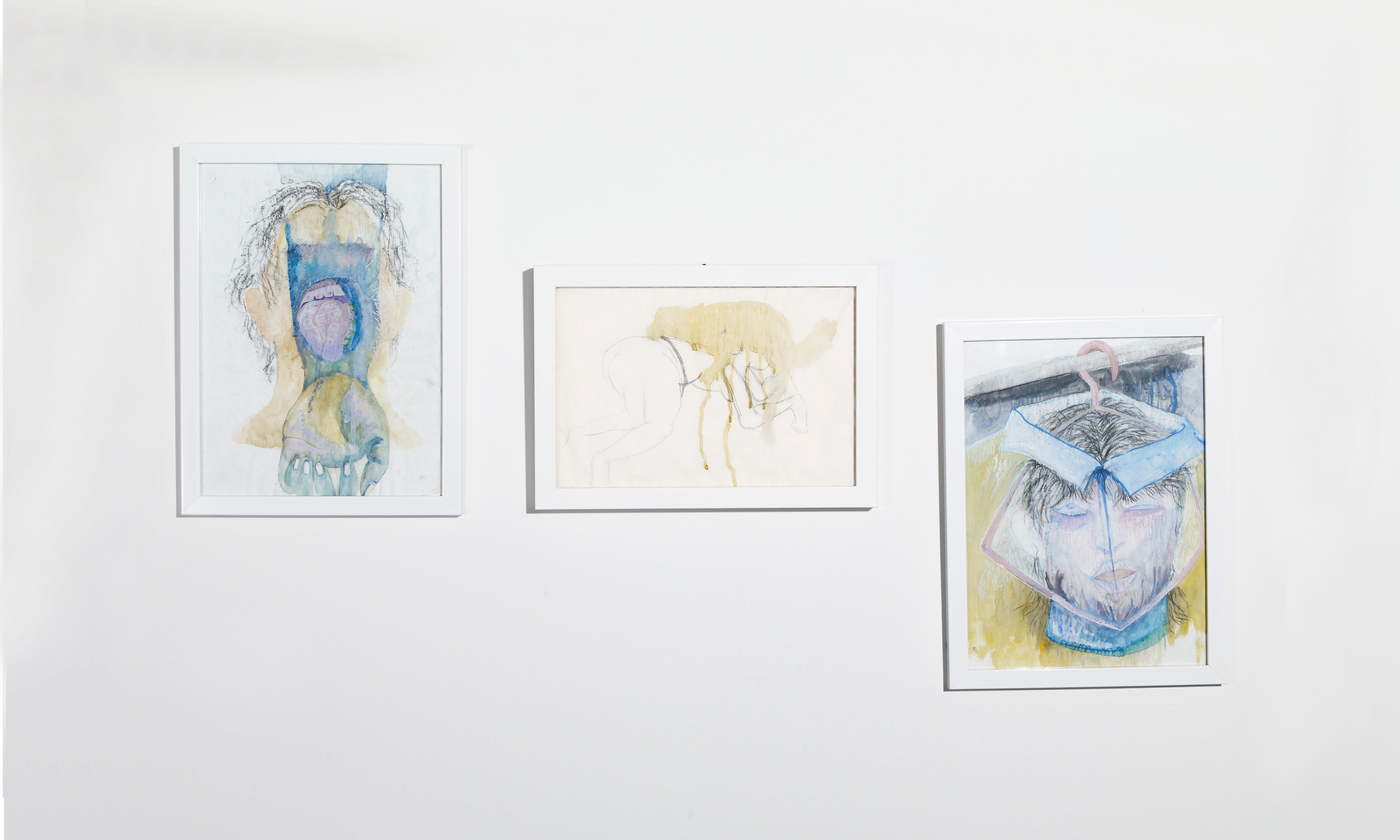
Lauren Lee
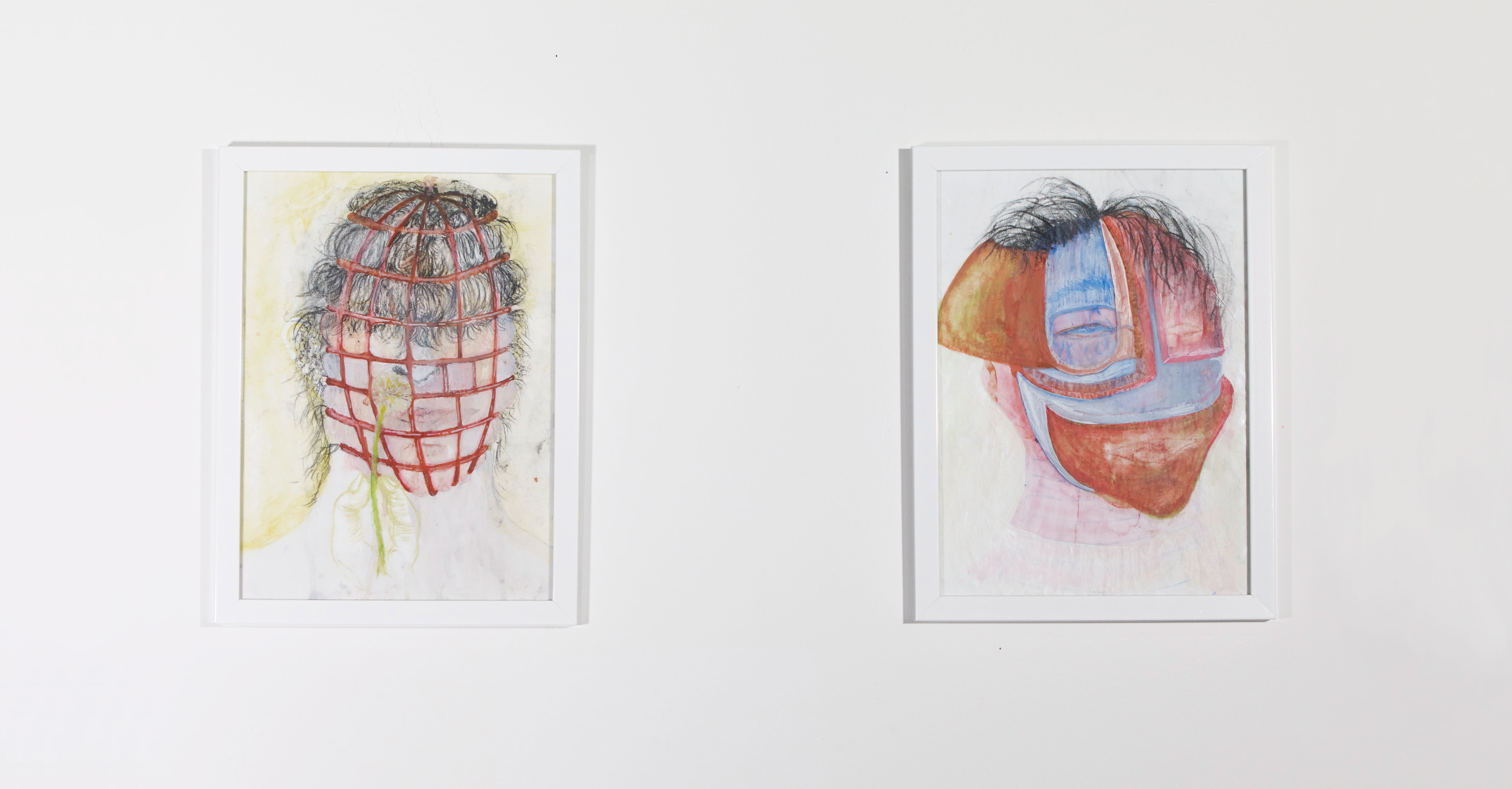
Lauren Lee
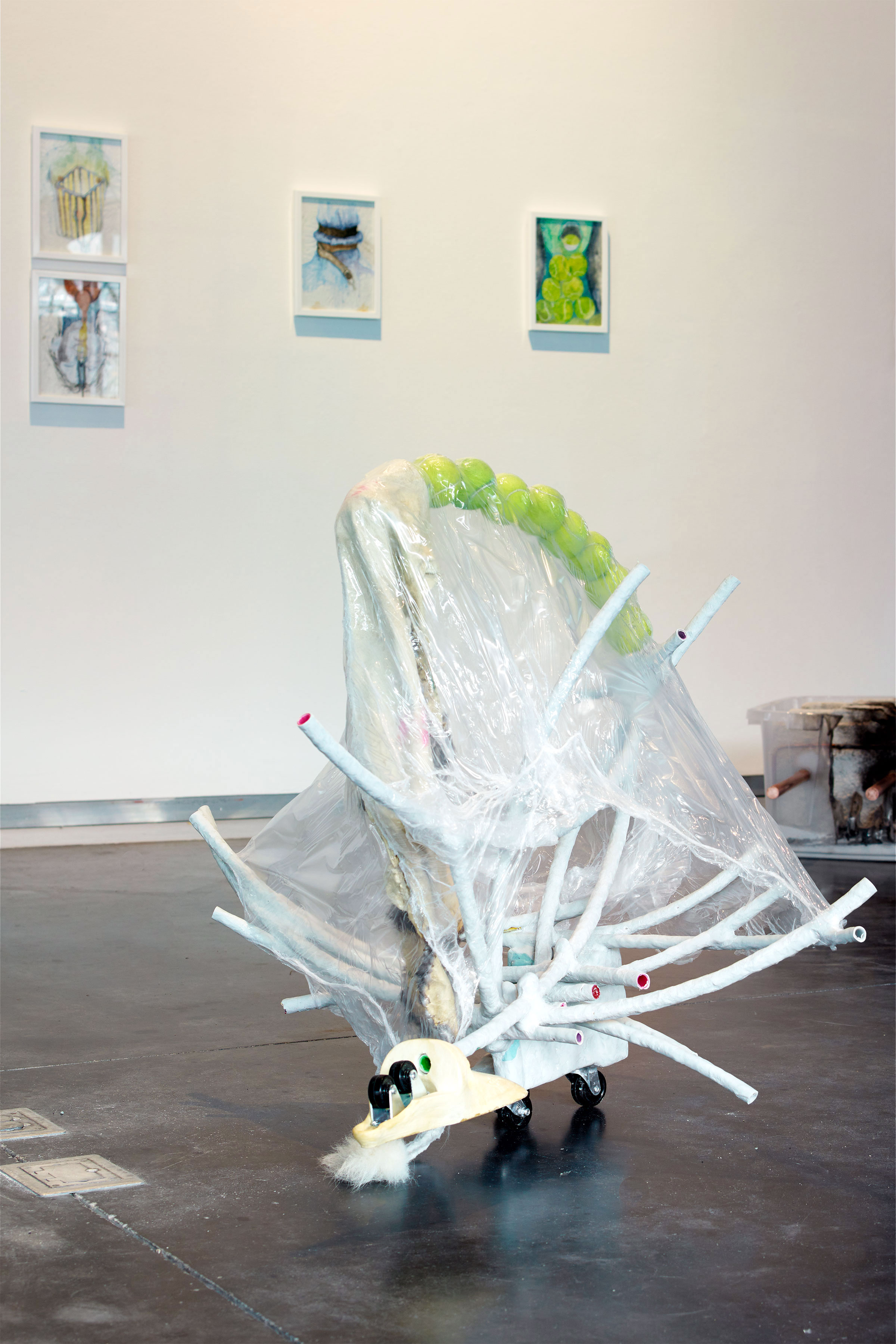
Lauren Lee

Lauren Lee
writing
Dog In Training: Review by Kathryn Gruszecki
A series of drawings depicting the process of human taxidermy
hang alongside an actual taxidermied fox— hollowed out, skinned,
and the face no longer attached. The fur, the skin, and the face
make up three objects. The skin of the fox is intricately set up
to purge the tennis balls it was trained to catch. The fox, like
a dog, is in the process of being domesticated.
The body of the fox sits next to its skin. It’s visibly soft fur
drives the urge to pet, yet it remains a hollow, faceless, empty
vessel. This empty body becomes the pictorial representation of
the process of becoming an object— one envisioned by the
taxidermist. The taxidermist gives the dead fox a new life
without knowing any details of the one it had prior. The title
of the series, Dog In Training, depicts the taxidermist as one
that fills the fox up to shape it into what it desires. The fox
is now a hound. She sits to be pet, fetches the ball in motion,
and obeys the orders of the artist.
The fox’s face is hung on the opposing wall helplessly staring
at its still, stuffed, body and flaccid skin as it takes on the
form of the artist’s imaginary.
Lauren Lee’s drawings fill the wall closest to the objects. It
is in this moment we meet Kevin and the artist’s narration of
human taxidermy. In a series of three, Kevin’s eyes are gorily
removed and replaced. Then, like the fox, his face is delicately
sliced and removed. In the final step, his head is stuffed with
cotton.
The relationship between the objects and the drawings is one
that relates closely to being desired and desiring. The Lacanian
notion of desire is always, “… the desire of the Other.” Which
Lacan claims is the process of “… always asking the Other what
they desire” (38, Lacan, Jacques. My Teaching; Verso Books,
2009.) The taxidermic object is emptied with all that makes it a
fox or Kevin and is stuffed into becoming the object of the
taxidermist’s desire.
The tension of this relationship to desire and being desired is
not absent of both pleasure and pain— it is depicted in Lee’s
drawings as masochistic. Kevin’s head is enclosed in a cage
while the artist holds a flower to his nose offering him a treat
of the flower’s smell.
Again, Kevin has hot tea poured down his mouth- symbolic of both
an act of care but painful as we can imagine the heat of the tea
burning the subject’s mouth.
In trying to become what the other desires we find pleasure in
pleasing them but pain in the transformation. There also is pain
in knowing that one could never be the perfect image in the eyes
of the other— a feeling of disappointment as we always fall
short— spitting up the tennis balls we were trained to catch
because catch is not a game meant for a fox. Lauren Lee is both
the fox and the human taxidermist, simultaneously an object of
desire and one that desires.
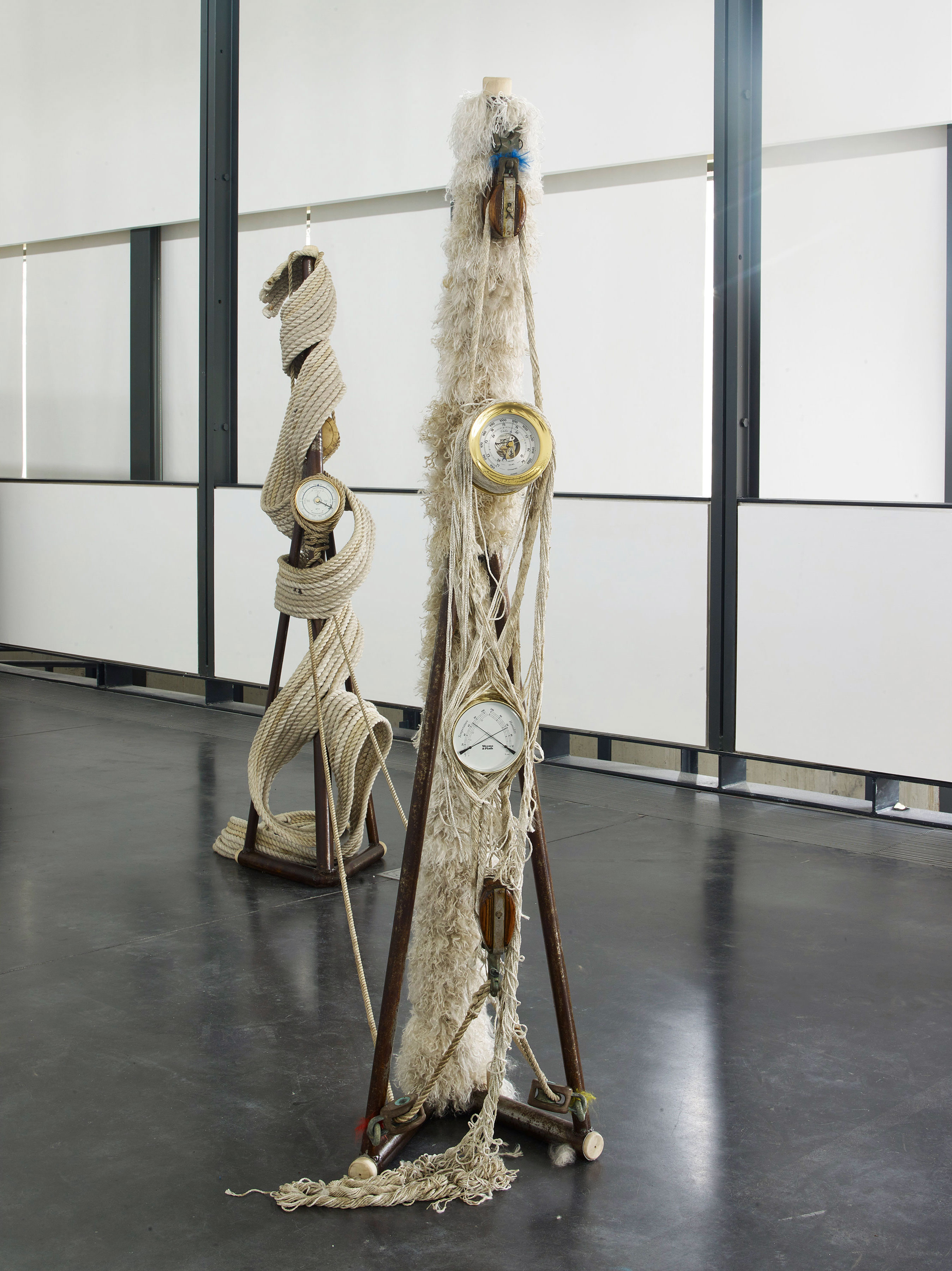
Anna Alvina Miller
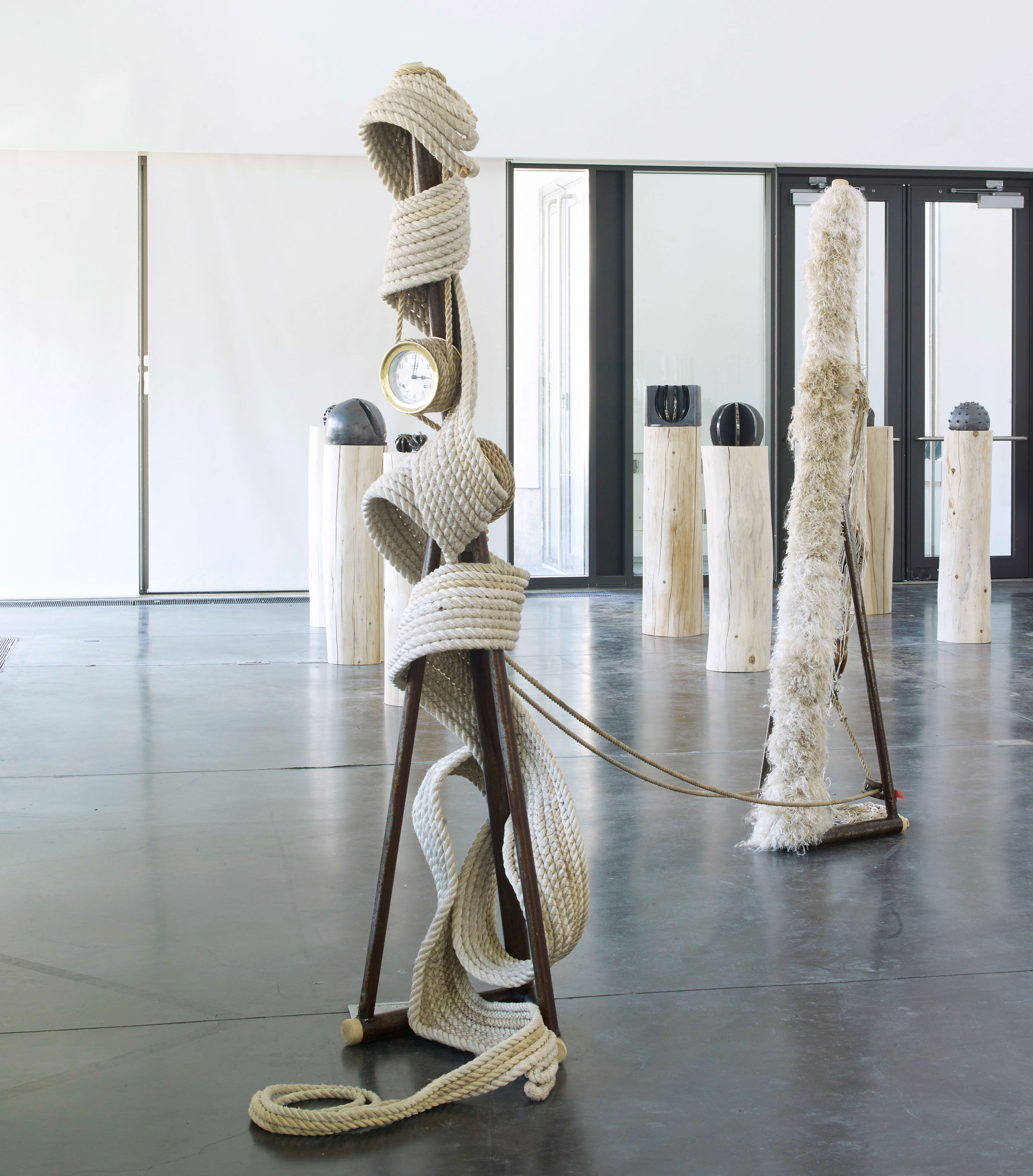
Anna Alvina Miller

Anna Alvina Miller
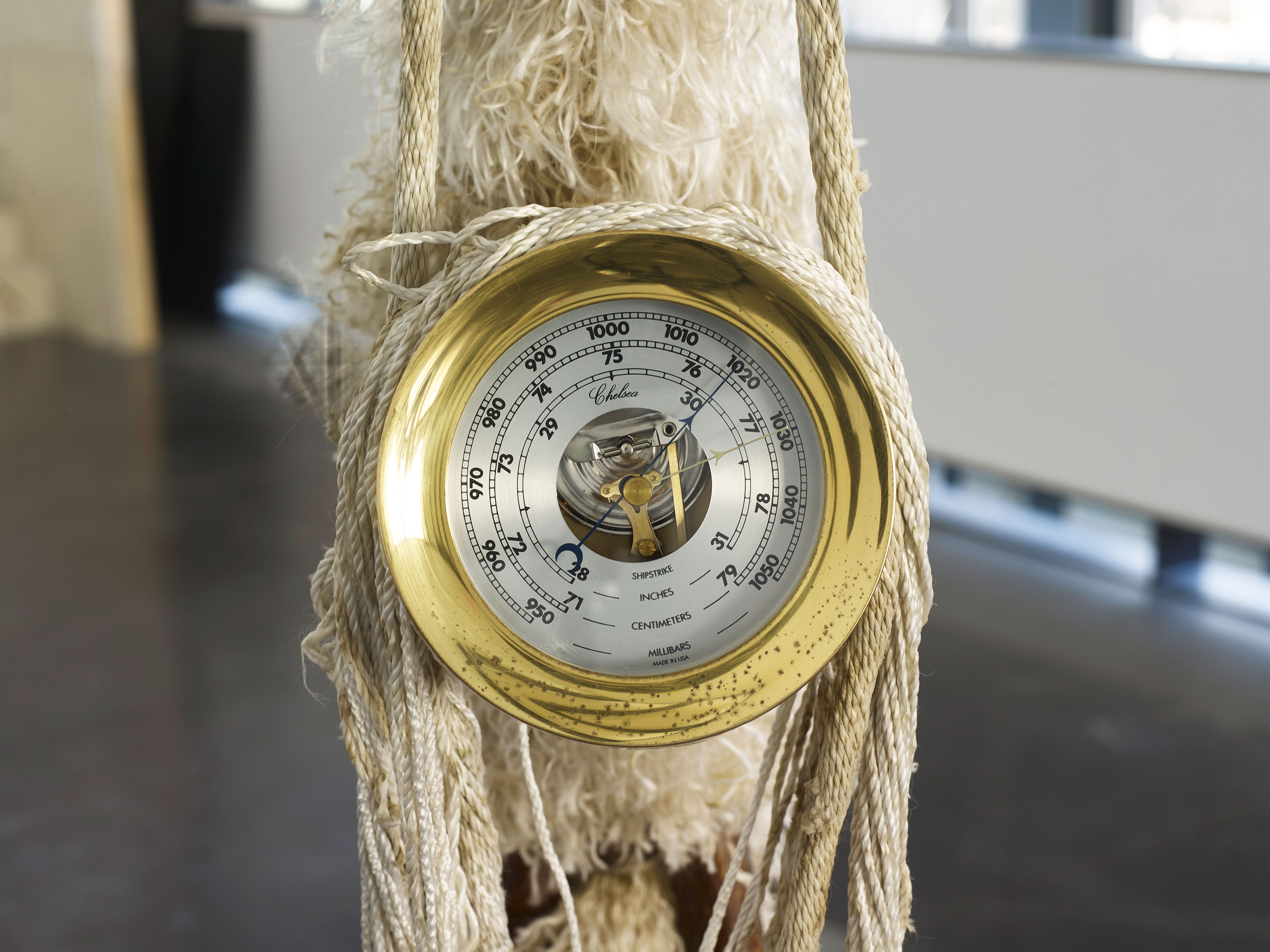
Anna Alvina Miller

Anna Alvina Miller
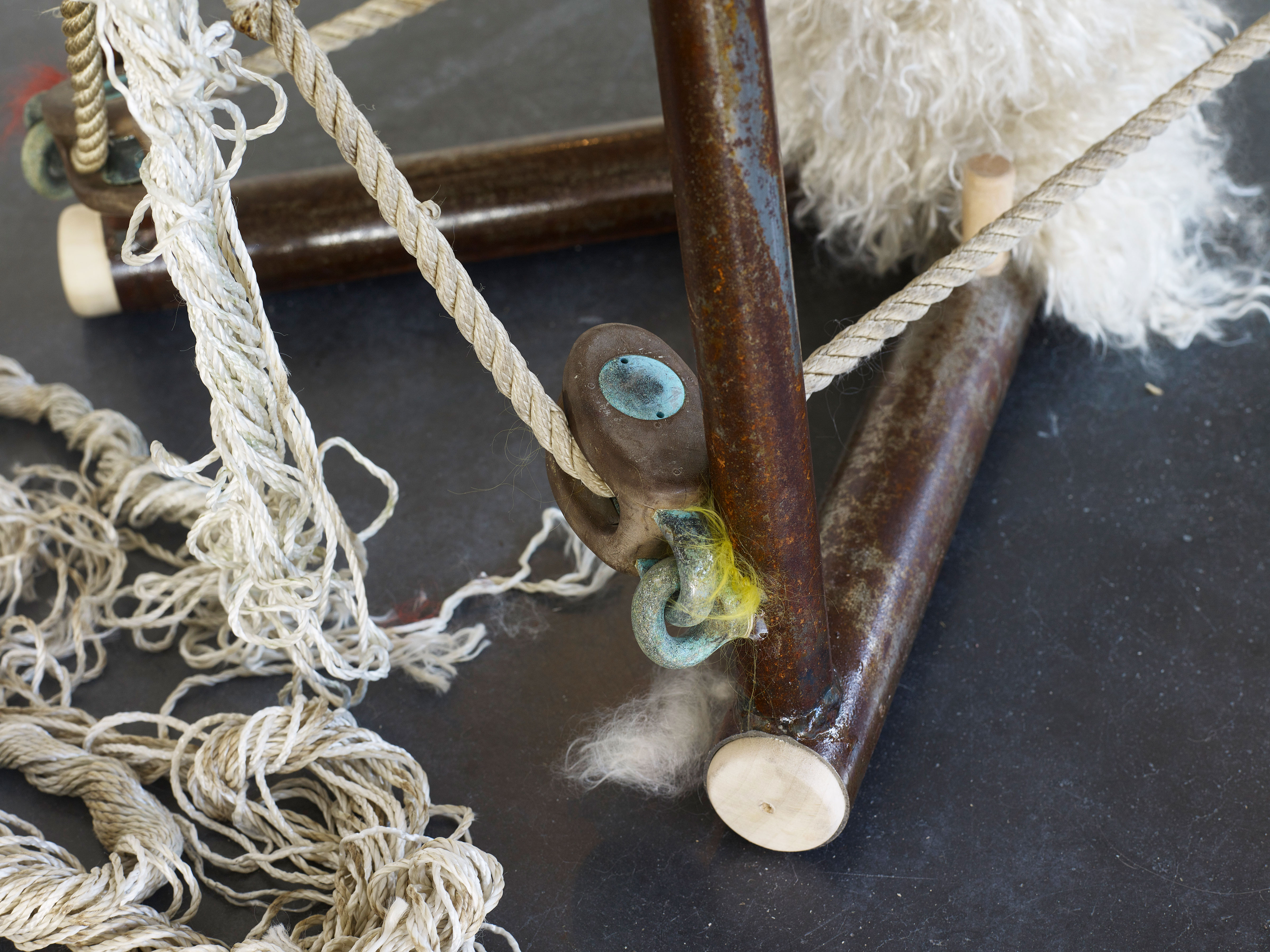
Anna Alvina Miller
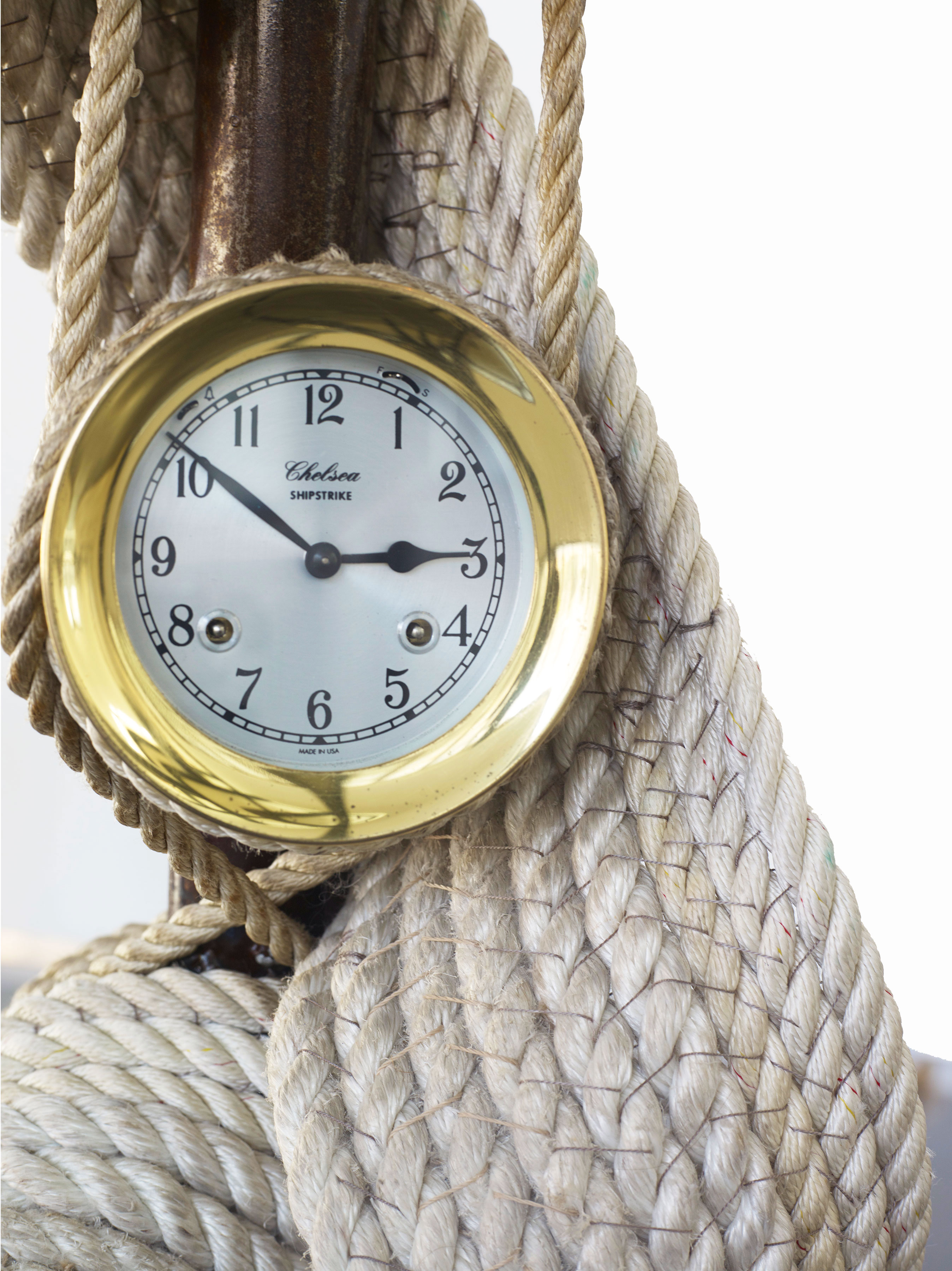
Anna Alvina Miller
writing
Lifelines: Anna Alvina Miller’s In the Blue (2021) by Rachel Tang
To locate ourselves and our sense of home in the expanse of the
unknowable, we must learn the distances between stars, rehearse
emergency procedures, and calibrate our instruments of
navigation. Seldom do we allow ourselves to venture into the
blue, to sit with the unknowable opacity of water. Yet so often
do we ask our waters—whether they be rivers, oceans, or seas—to
bear the anxieties we project upon the mysteries they embody. To
live out on the water, as Anna Alvina Miller has been doing with
her partner, is to become accustomed to sitting with the
discomfort of these unknowns; you exist according to the whim of
the elements, what weather the winds will bring in, or how the
waves will roll beneath your feet.
Miller’s work, In the Blue, invites us to become familiar with
the textures of not knowing. Here, her thirty-five foot home on
the water is deconstructed, stripped down to the parts most
essential to safety and navigation. Two twin steel bodies are
wrapped with a continuous length of rope, forming a
foreshortened kind of a tentacular constellation. These dual
structures are held together, with some slack, by the very same
ropes which constitute them. This is the moment that the
celestial meets the terrestrial, the moment between that which
is tangible and that which is just out of reach.
A rope, pristine and uniform in its undulations, is wrapped
around one of the steel bodies. Indelibly intricate stitching is
revealed upon closer inspection. On this celestial twin, the
rope unfolds around a tide clock, with its verso bearing a
traditional clock, gesturing towards our insistence on measuring
the present, making time paradoxically slip past us in two
directions. To not have a clock aboard is a cardinal sailing
sin, as time spent on the land can feel dangerously different
than time spent at sea, as one’s temporal sensibilities are
liquidated, quickly becoming difficult to grasp.
In the presence of epistemological gaps which threaten our
stability, protection and small comforts become important.
Broken down to its smallest fibers, a different, dilapidated
rope creates a protective wrapping around the other body, the
terrestrial twin. This kind of rope, called “baggy wrinkle” is
an old sailor’s process that repurposes otherwise useless
materials into a layer of protection. This terrestrial body also
bears a barometer and comfortmeter to measure pressure,
temperature and humidity; peculiar machines regulating our
proximities to the natural forces around us.
The rope that supports the tide clock on the celestial structure
extends out like a lifeline to its twin. In nautical terms, a
lifeline is many things: a line shot to another ship in
distress, a line used to lower divers into the depths, a line
that attaches a person to their vessel. The diagonal line in
one’s palm, thought to indicate the length of one’s life, is
another kind of lifeline, etched into our own bodies, perhaps
another attempt to compress the unknown into something
measurable. Here, this continuous length of rope between twin
bodies loops and twists to form multiple infinity signs, a
lifeline ad infinitum.
This past year, we have been plunged into the blue. For many
reasons, time feels different and we feel particularly
vulnerable. When we travel into the blue, we worry that there is
a chance that we might become adrift or disappear completely.
Here, however, Miller offers us a lifeline. In the Blue is a
promise that we are still free to wander, knowing we will safely
return to our vessels.

Randi Renate
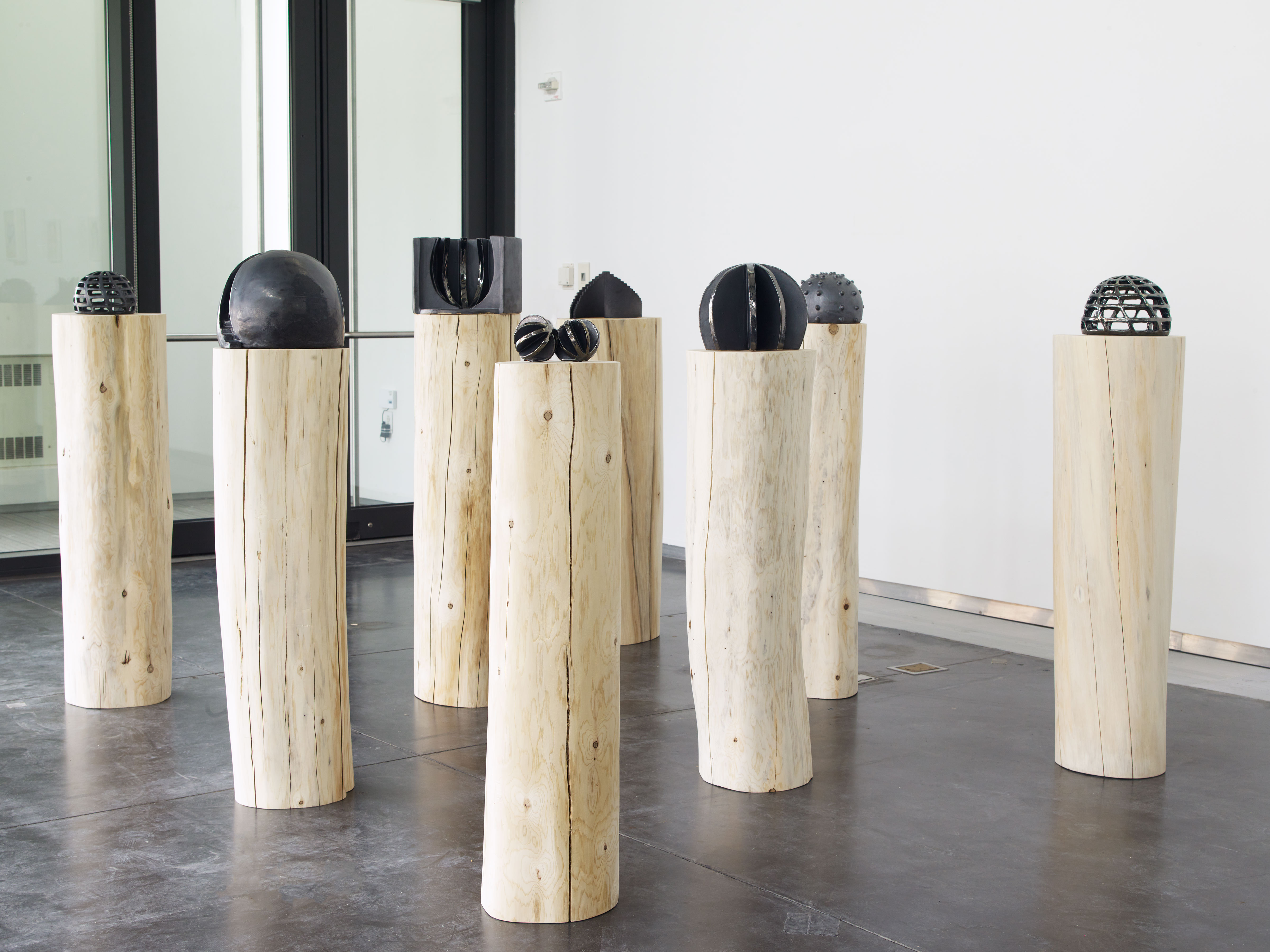
Randi Renate

Randi Renate
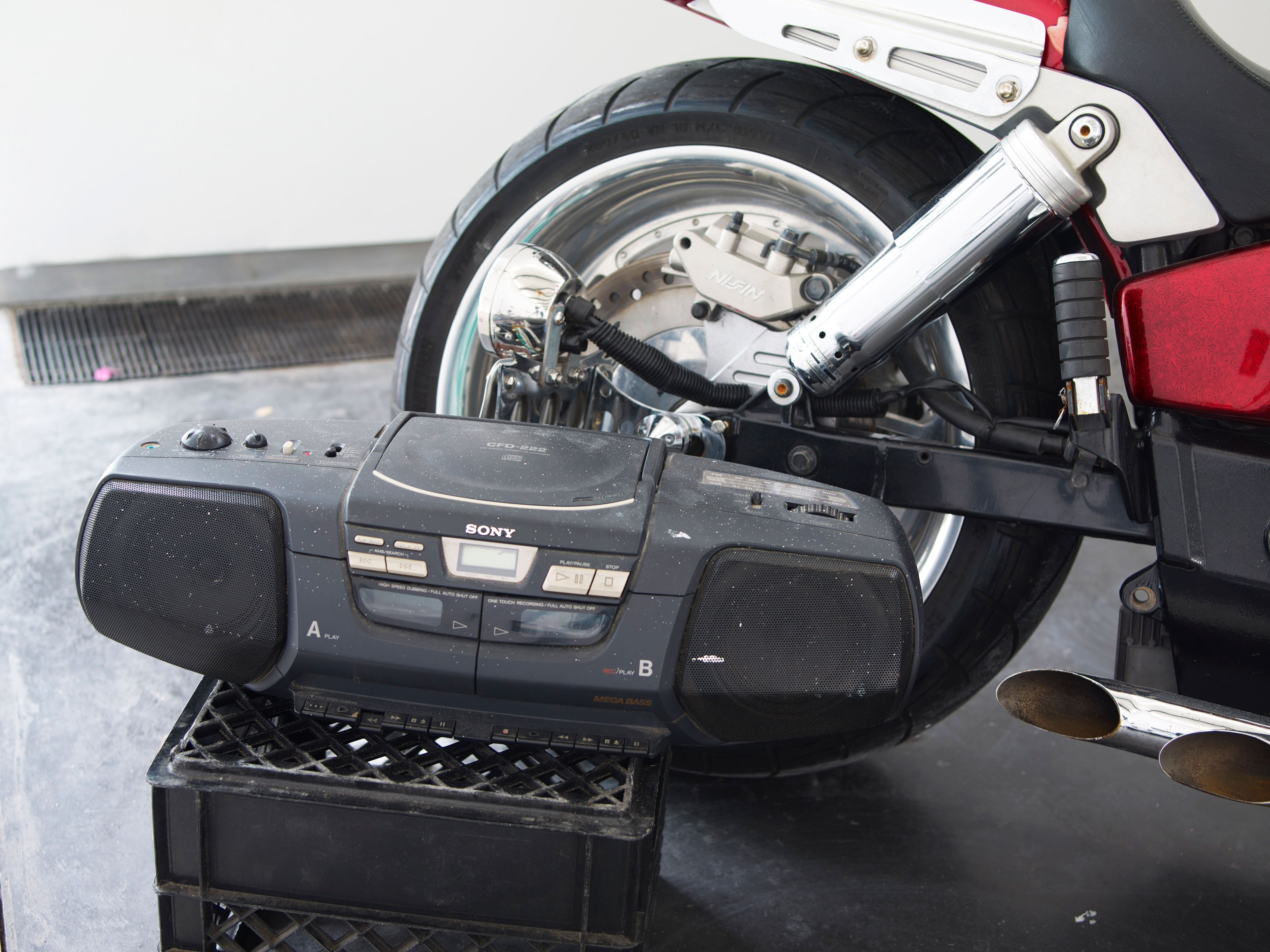
David Roy / BLACKNASA
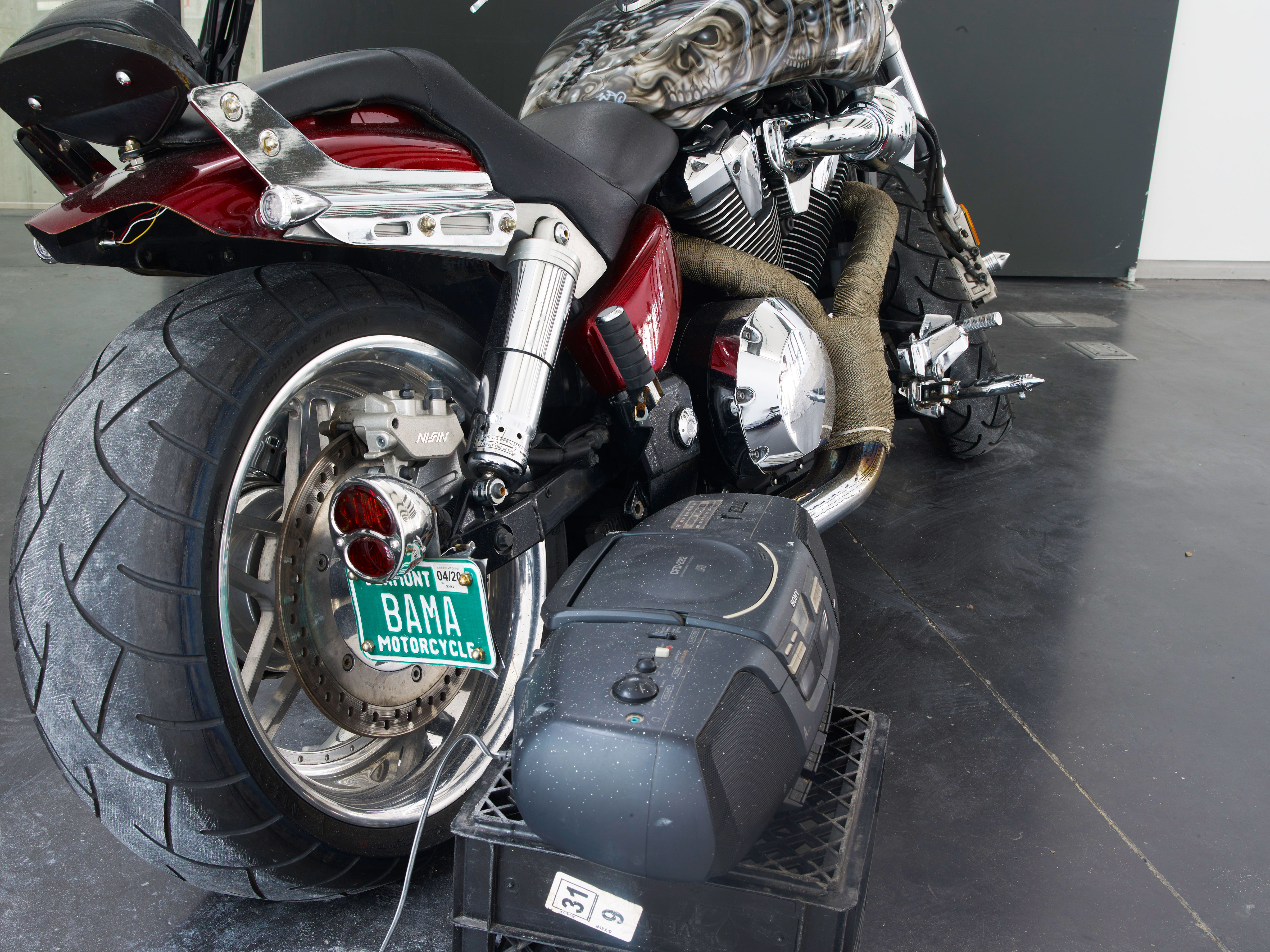
David Roy / BLACKNASA
writing
text by Holly Bushman
In August 2019 David Roy took a cross-country motorcycle trip
from Inglewood, CA to New Haven, CT. Road trips have a way of
climbing into our minds and resurfacing in unexpected ways: we
remember billboards and gas station meals, unfamiliar faces and
unremarkable stretches of highway. On this particular trip,
David was confronted with the realities of life in America: the
ecological damage, economic depression, and enduring racism that
marks so much of this country, alongside fading reminders of
American exceptionalism and the manufactured symbols of past
greatness, a greatness that for many Americans has never
existed.
Yet David’s trip has informed his practice as a powerful means
of thinking through contemporary American identity and its
potential futures. The founder of BLACKNASA, a space program
committed to peaceful and meaningful exploration, David builds
rockets which reclaim the power of technology as a tool for
good. His rocket launches are events which unite and inspire,
and remind us of the incredibly human capacity for joy and
wonder.
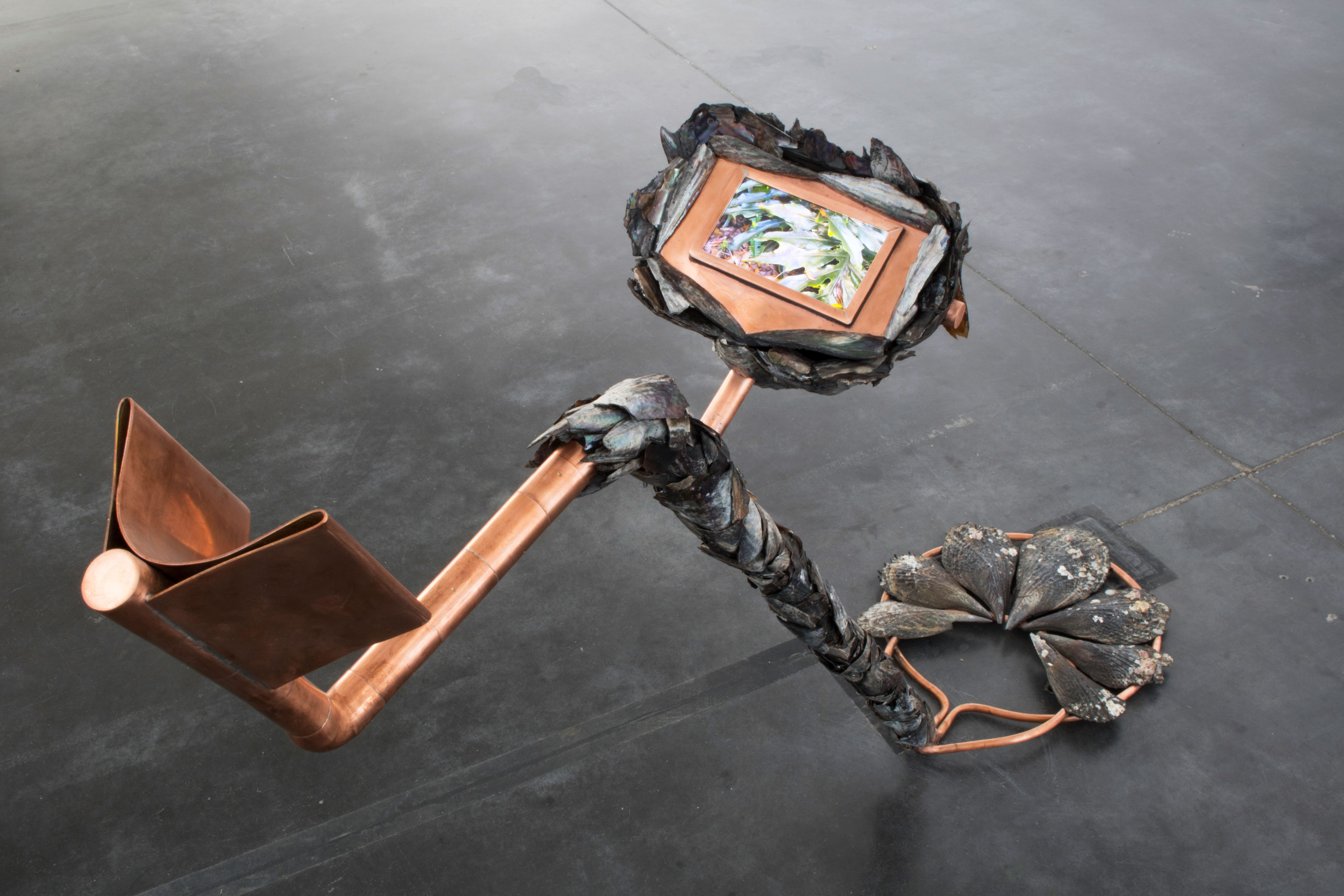
Alex Zak

Alex Zak
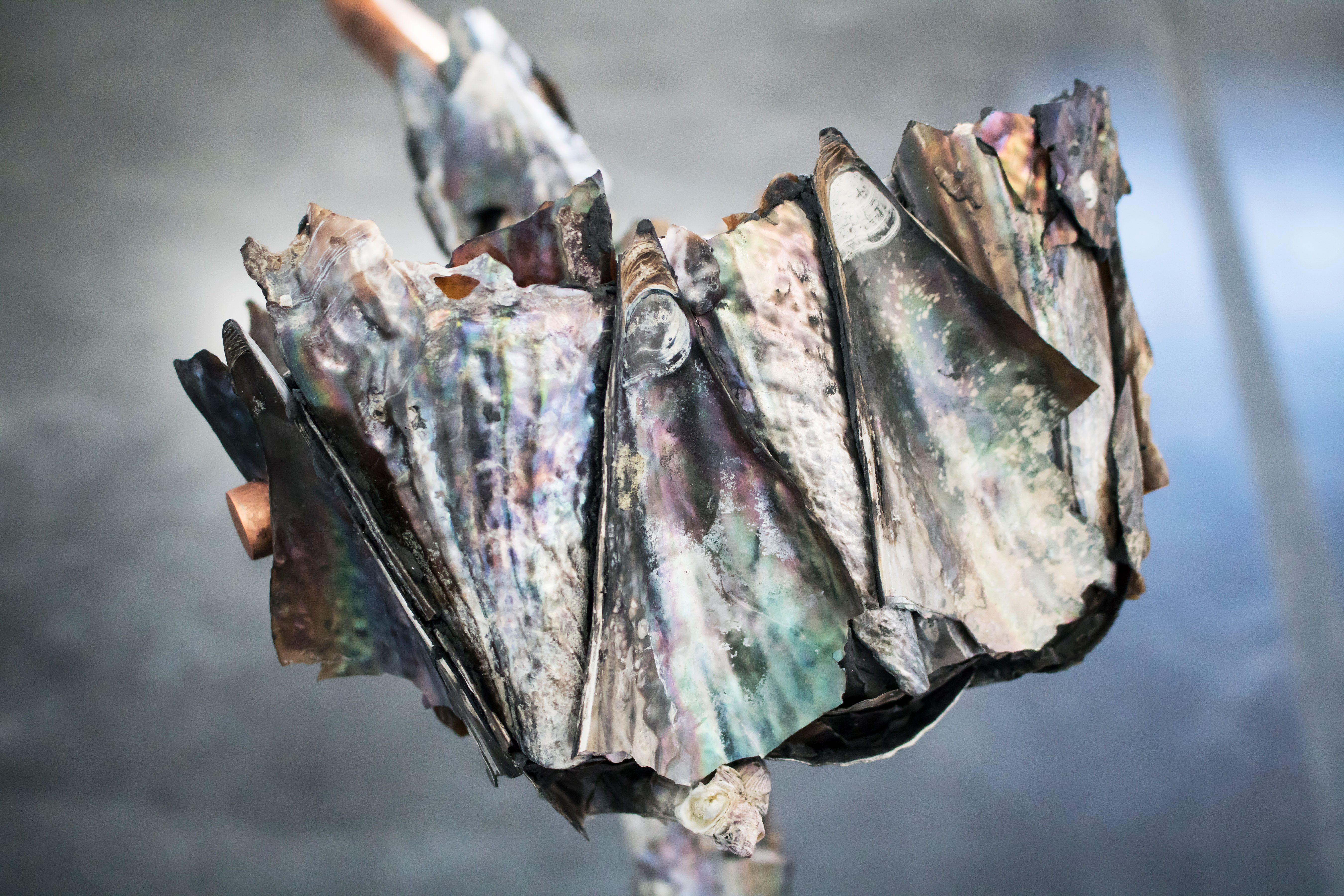
Alex Zak
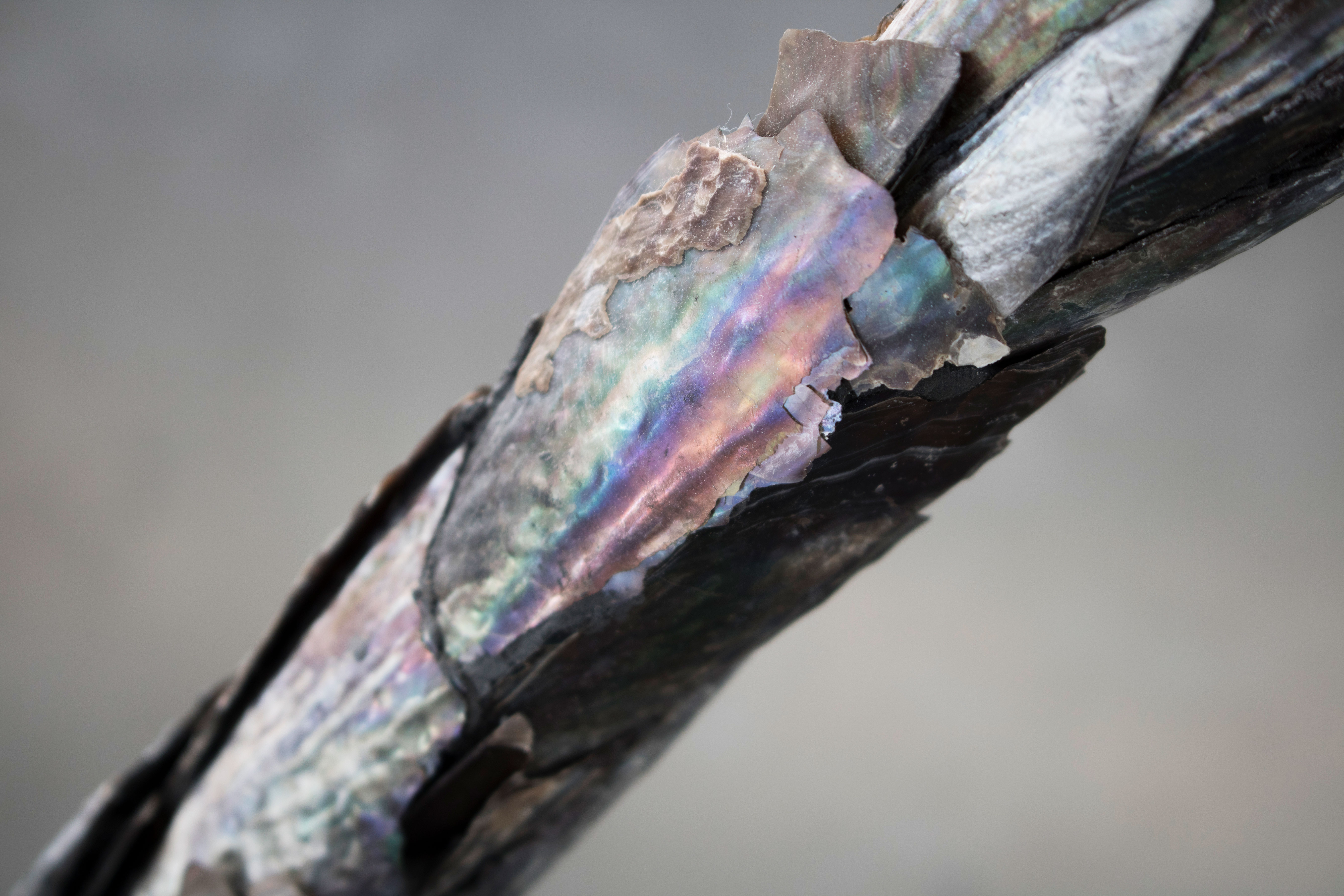
Alex Zak
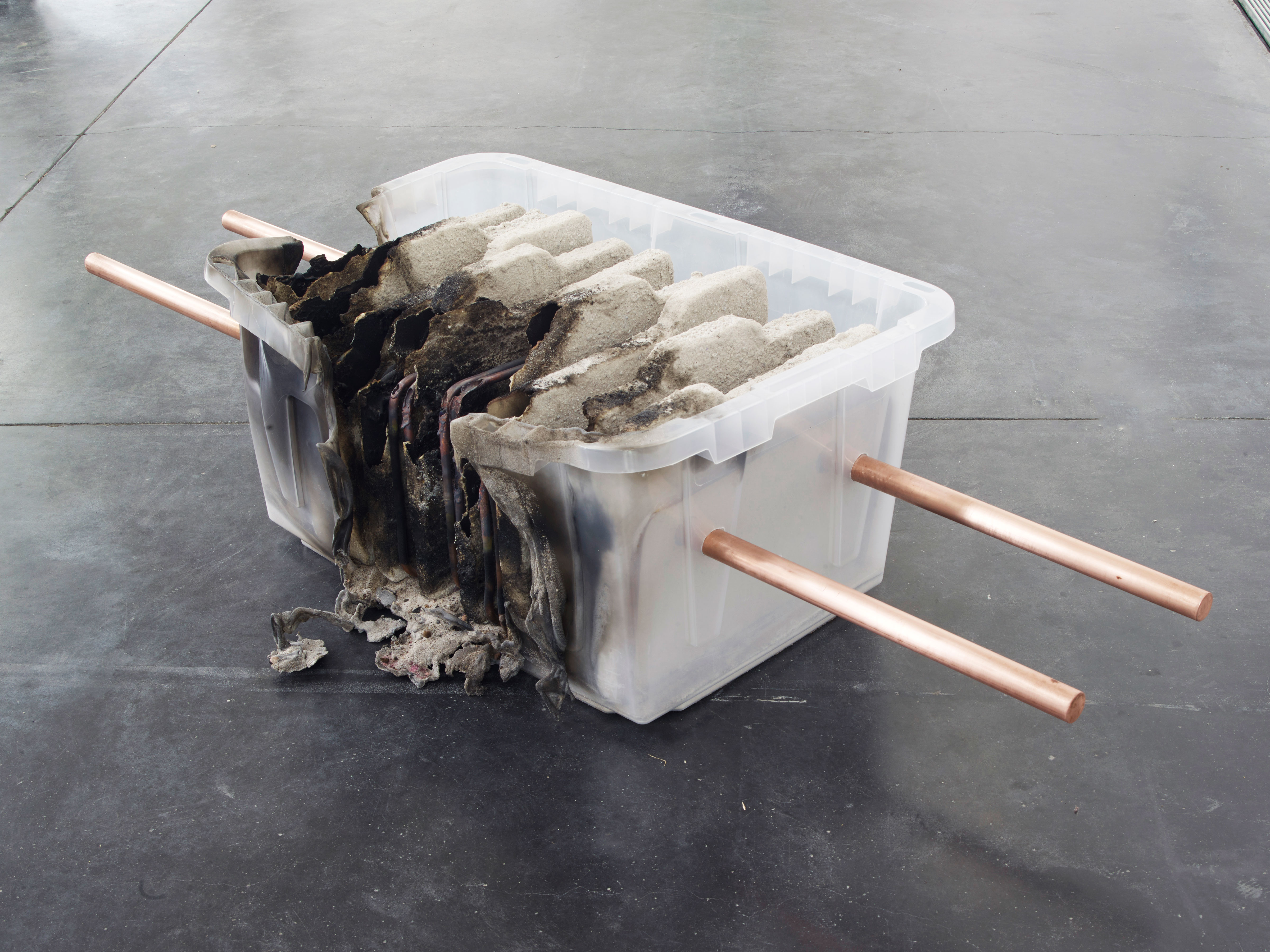
Alex Zak

Alex Zak
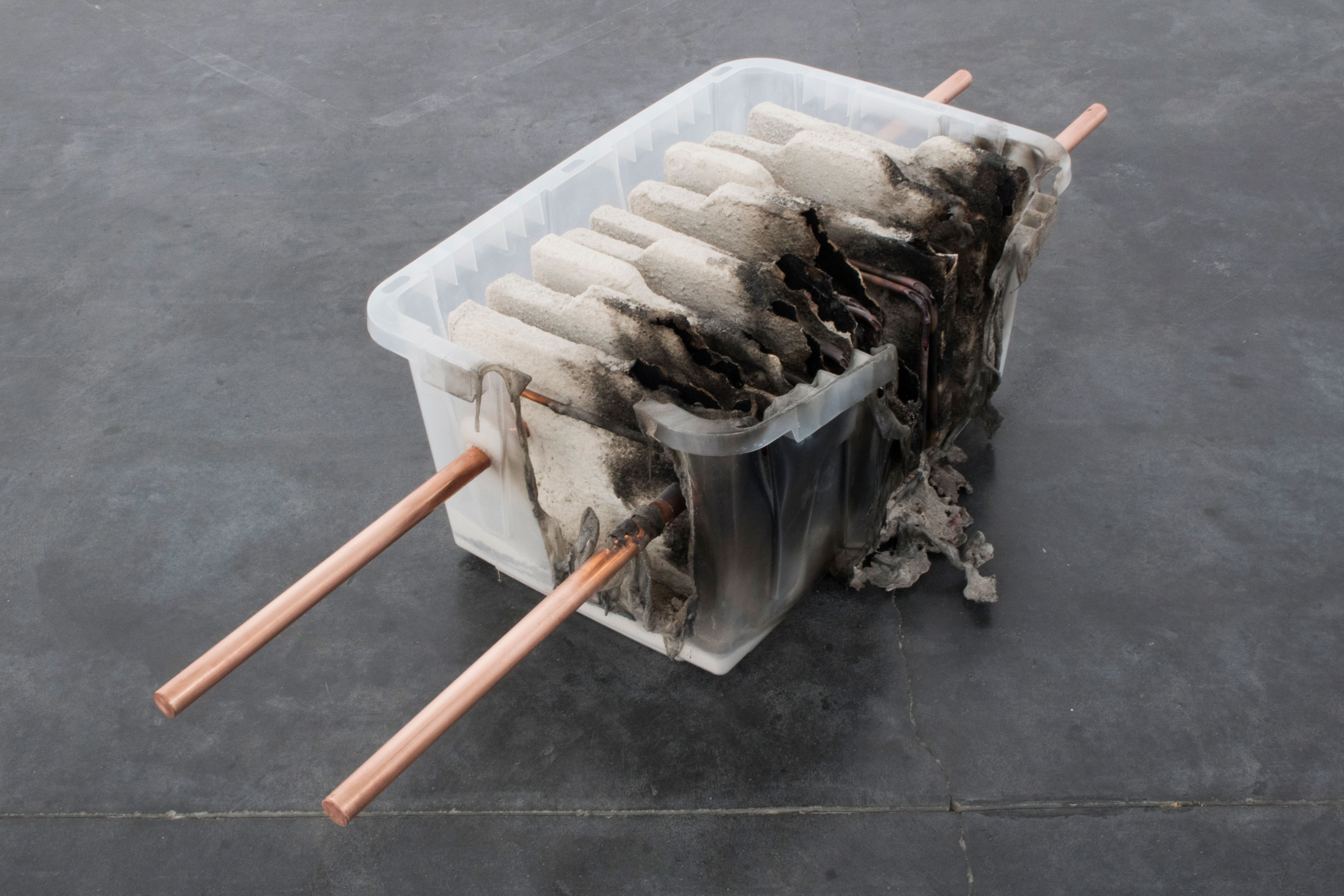
Alex Zak

Alex Zak
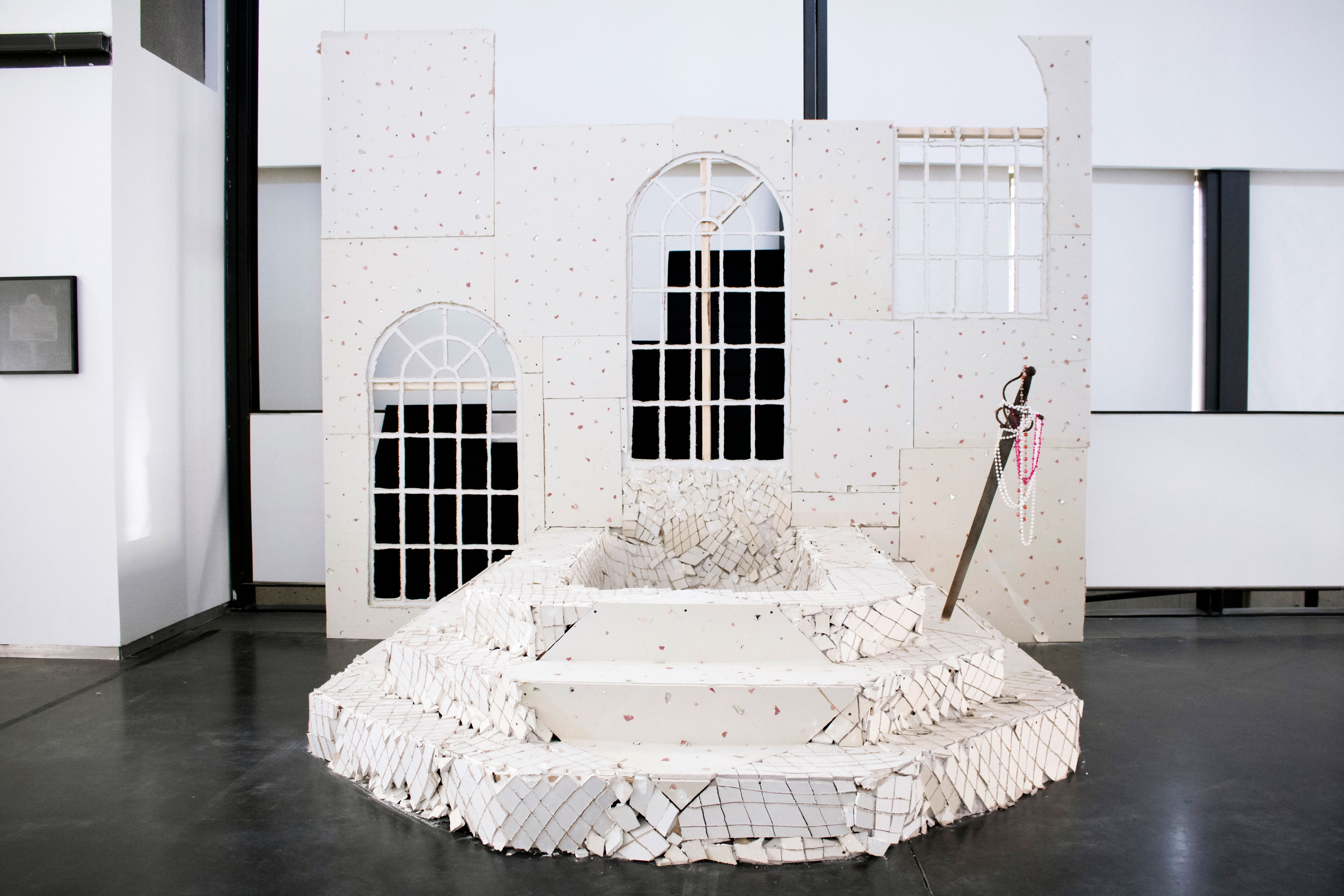
Alex Zak
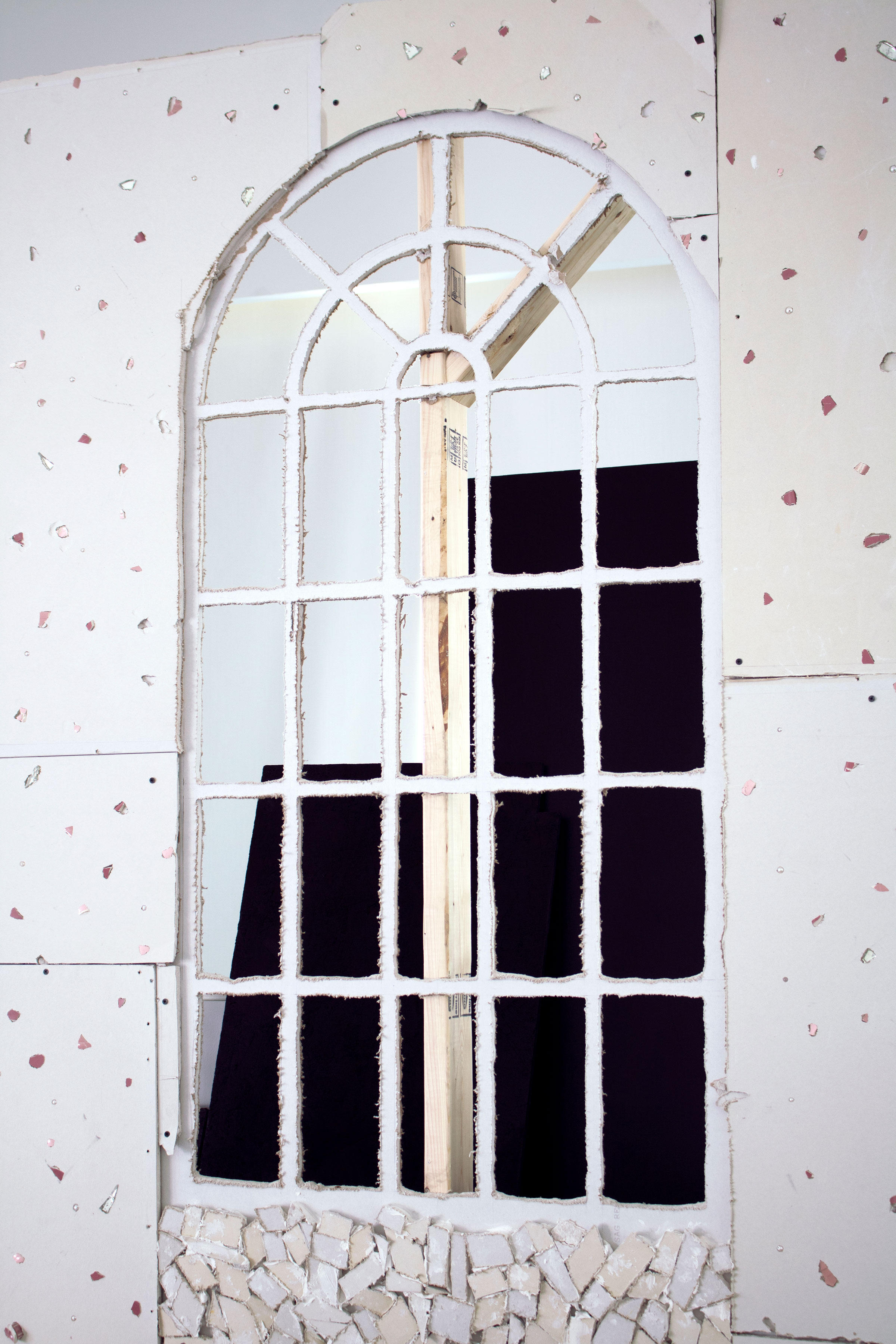
Alex Zak
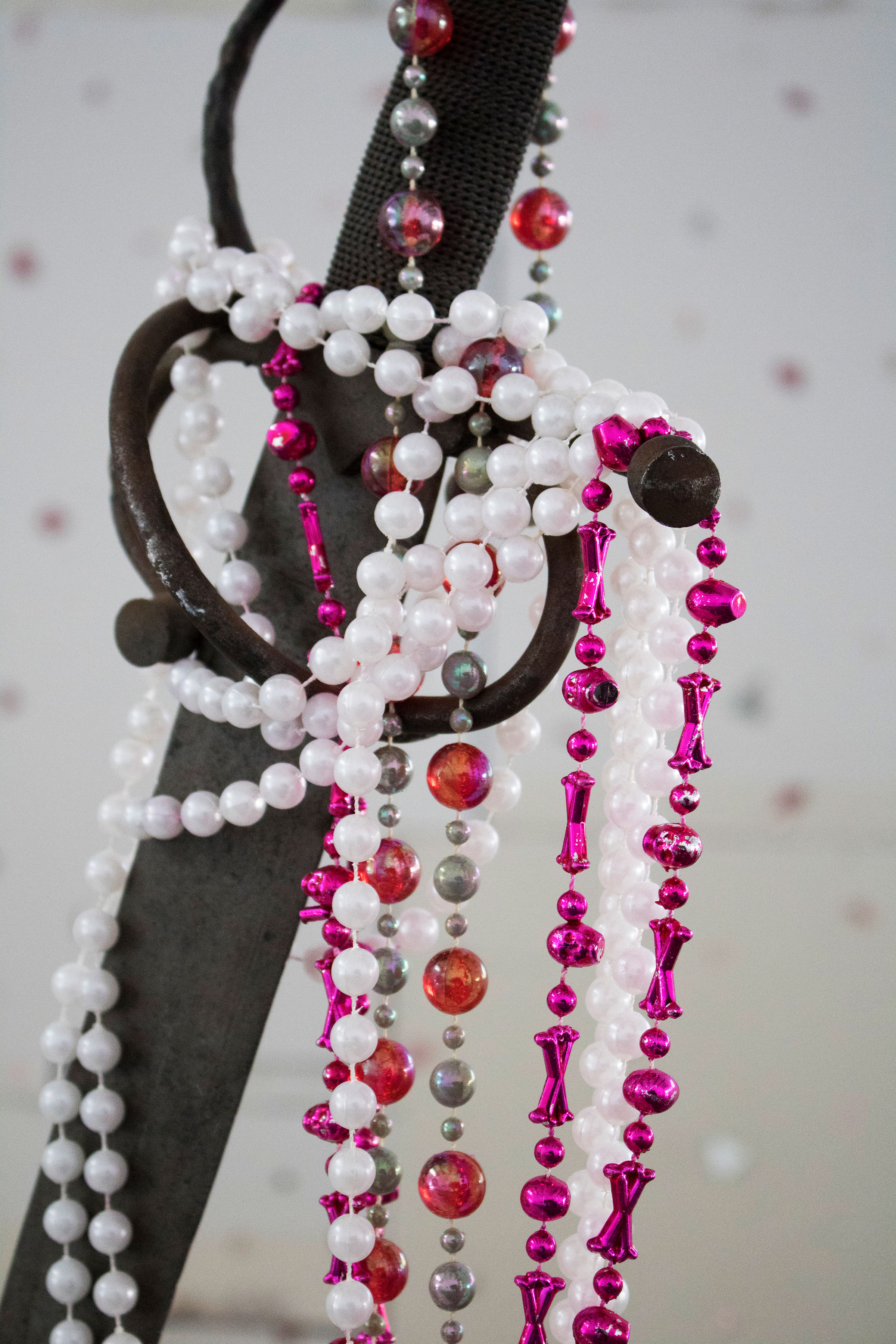
Alex Zak
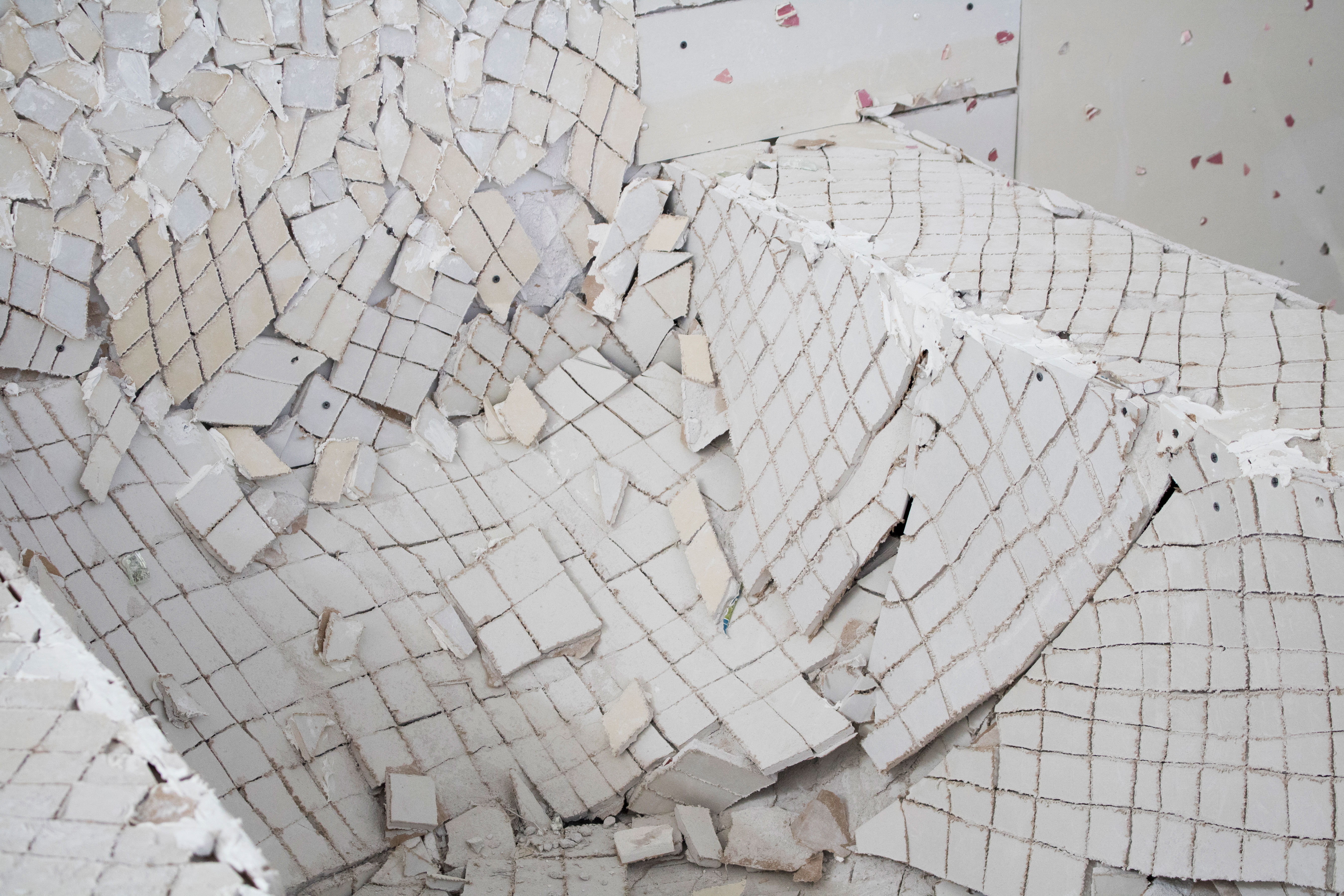
Alex Zak
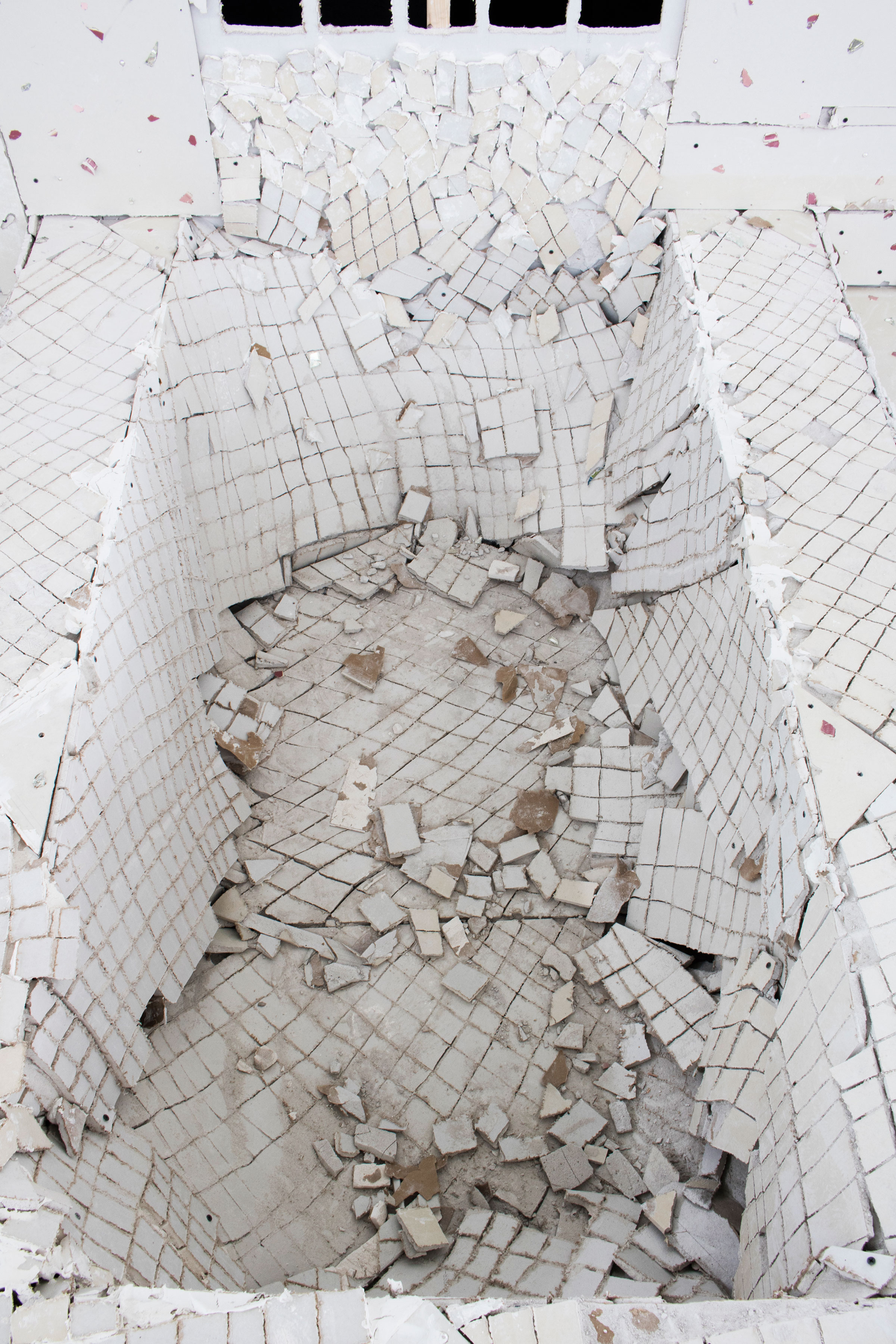
Alex Zak
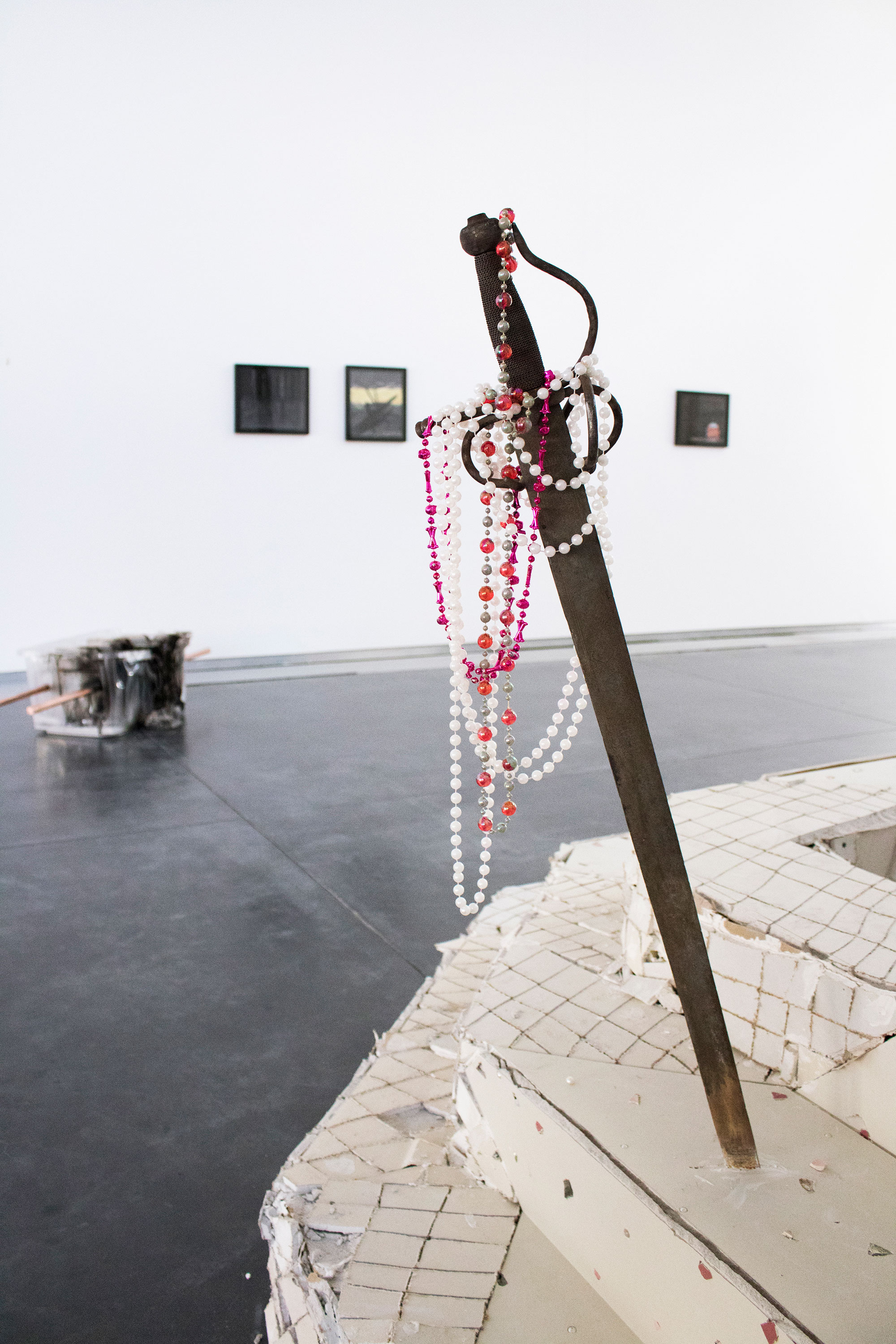
Alex Zak
writing
On Things That Recede by Joseph Zordan
“Spring break… spring break forever…” — James Franco as Alien in
Spring Breakers (2012)
Florida nights are typically associated with bright club lights
flashing on the shore and young tourists screaming until dawn. A
land founded on the myth of eternal light, youth, and excess for
Spanish conquistadors, reiterated time and time again within
popular culture, Florida remains a locus of pleasure and
debauchery within the American imaginary. Within Alex Zak’s most
recent installation bringing together drawing, installation, and
sculpture, however, we are asked to think of a night that does
not scream, but recedes quietly into the shadows instead, a soft
breeze between the leaves. In the quiet of Zak’s rendered night,
away from the lights and noise of urbanity, a forest stands
hushed and still; a fountain runs dry, and a sign becomes
illegible. In this voided landscape of the new moon, how quickly
does your own hand become unfamiliar to you?
This defamiliarization—whether it be of material,
myth, self, or image—is a central aspect of many of the works
within the installation. Common legends of the fountain of youth
among early European settlers and explorers of the tropics hover
around What Spoils the Fountain, Poisons the Well. The
gravitational center of Zak’s constellated installation, this
work is a barren well built against a sheetrock wall incised
with three windows cascading downward. Tiled with unpainted
scored-sheetrock and imitation terrazzo, also made of sheetrock,
on a wooden stair armature leading to the barren pool, this
architectural piece seems not only drained of its water, but of
the very magic and vitality it may have once contained. The
sheetrock crumbles and splays outward from the piece, seemingly
exhausted by the weight of history and image it was meant to
carry. A material typically meant to recede behind works within
art galleries, sheetrock here takes a lead role, unmistakable
and unavoidable. In foregrounding sheetrock, Zak denaturalizes
the material, along with the mythos it represents.. Embedded
within the stairs, a rusted sword ornamented with hot pink and
pearl-esque plastic bead necklaces seems to locate the wound
which bled this well dry. Its form seems to place the colonial
aspirations for immortality and the Edenic infinity of natural
resources as an unwinnable prize, which comes at a particularly
poisonous cost to Native and Indigenous inhabitants and
lifeways. For the artist, it seems that colonial fantasies
collapse under the weight of their imposed promises, an
unsustainable system meant to crumble beneath settlers’ feet.
The moons orbiting this central work, Indiscriminate
Collector and Burnt-Out Chariot, locate these colonial histories
and broken vows further. The former, an assemblage of iridescent
pen shell fragments hoisted on a copper frame, congeal into the
image of a metal detector. A video, nestled within the work’s
screen, of plant life from a relative-of-the-artist’s backyard
loops back in on itself over and over again. As the wind blows
and the sun shines on the recorded botany, strange, shifting,
kaleidoscopic colors shimmer across the plants’ surface; the
water from the surrounding area contains enough metals to be
absorbed within the tissue of the plants themselves. These
collisions between non-human life and the metallic—whether of
the plants in the video or the composition of the metal detector
itself—rehearse the hybridization for which the American tropics
are well known. Within these combined forms, colonial desires
and aspirations again become evident. Indiscriminate Collector’s
iridescent and shining body conjures the aspirational search for
wealth along the shore and tropics that gave way to many of
these hybrid bodies from earliest modes of colonialism to today.
Whether it be from a shipwreck, plantations, or tourists’ loose
pockets, myths of abundance and economic mobility remain.
Ecology, for Zak, seems to go far beyond even that which is
breathing, and brings a liveliness to metals which infiltrate
boundaries of the epidermis—human and plant alike.
These stories seem to reach their culmination in
Burnt-Out Chariot. Carefully melted, the plastic bin and the
folders within Burnt-Out Chariot seem to still be settling from
their previously overheated state, a small pile of debris of
mixed materials sloping from the bin. But even in its state of
ruin, its copper handles gleam, polished and pristine. An
amalgamated object, making the familiar strange yet again. In
the charred remains of transmission, Zak seems to gesture toward
the polemics of history and memory itself: What stories survive?
And for whom? And perhaps more importantly: What history is
destroyed? And for whom?
Yet even in the midst of ruins and collisions, violent and hot,
there remains the possibility of what is to come. In the bizarre
alliances between materials and images, human and non-human,
living and nonliving, something else seems to be waiting in the
wings. Rather than a platform at the end, the installation seems
to be the stage for what is next. Within the suite of drawings,
nocturnes in their own right, The Morning After reveals a golden
break of dawn. The windows, when catching light just right, cast
beams onto the beads which gleam just like the copper. The
night, however, does not need to dissipate for us to move beyond
it; Zak seems to have made his own stars, whose gleam might
guide us beyond this ruin to someplace else, yet to be imagined.


